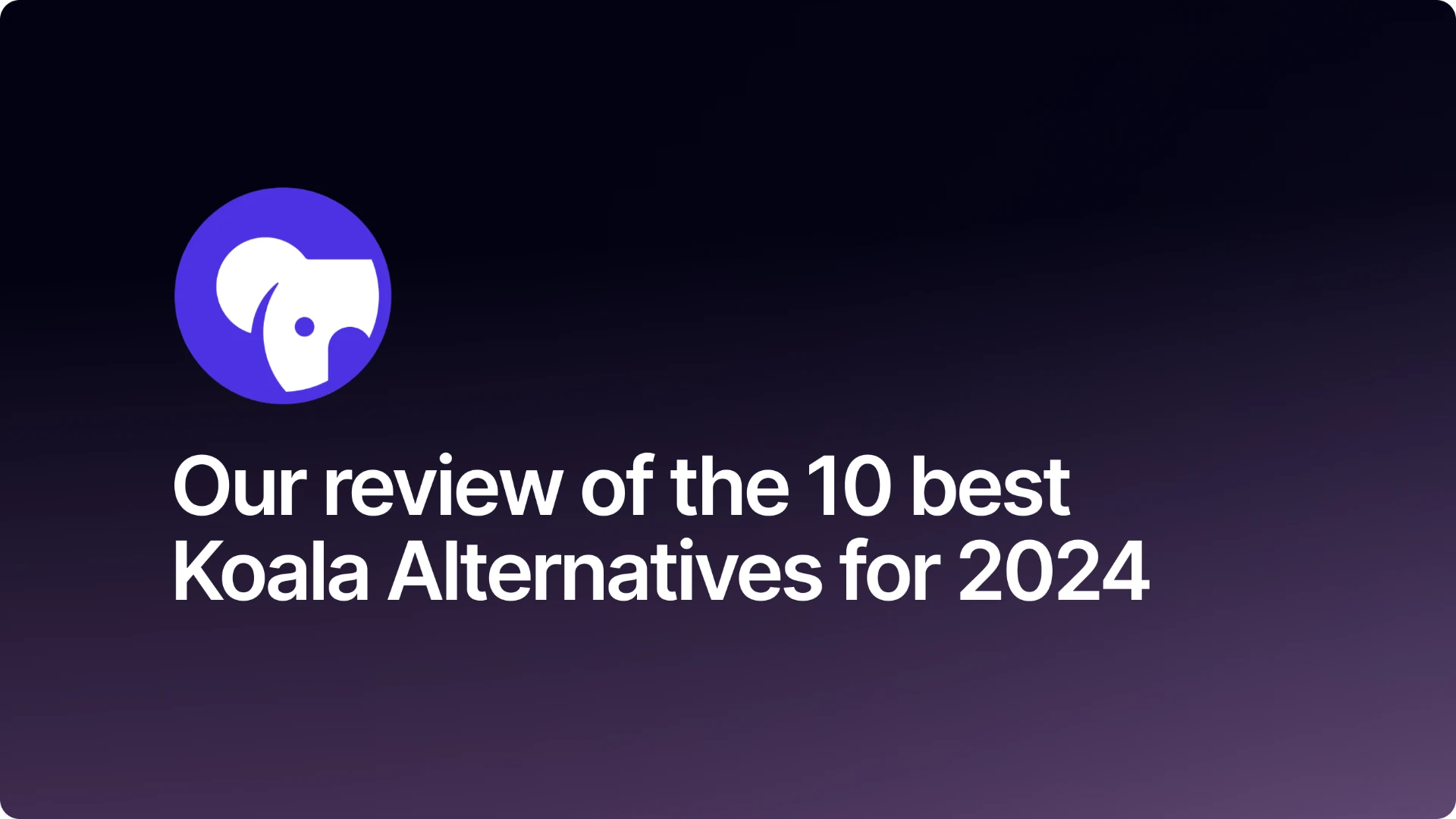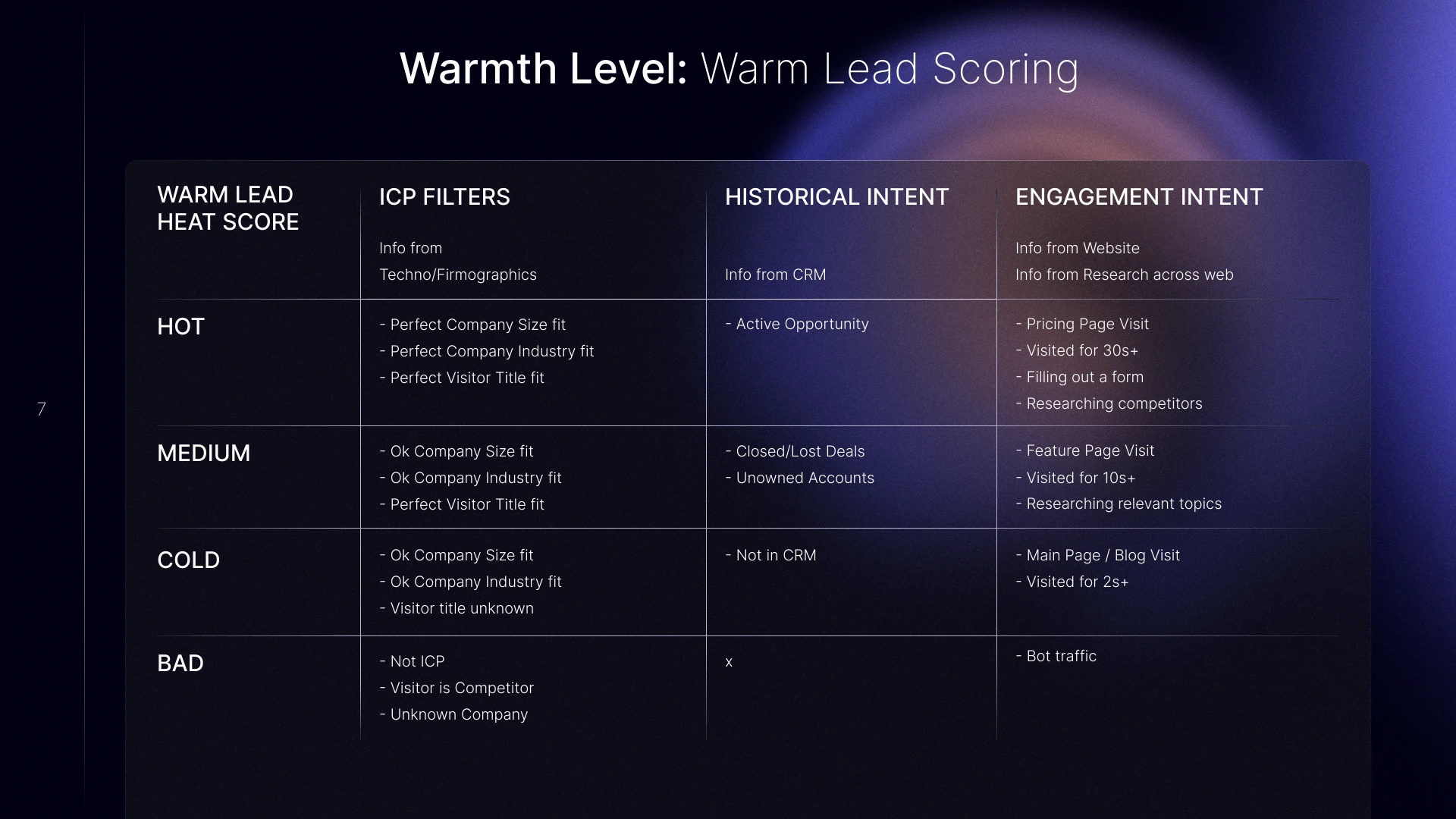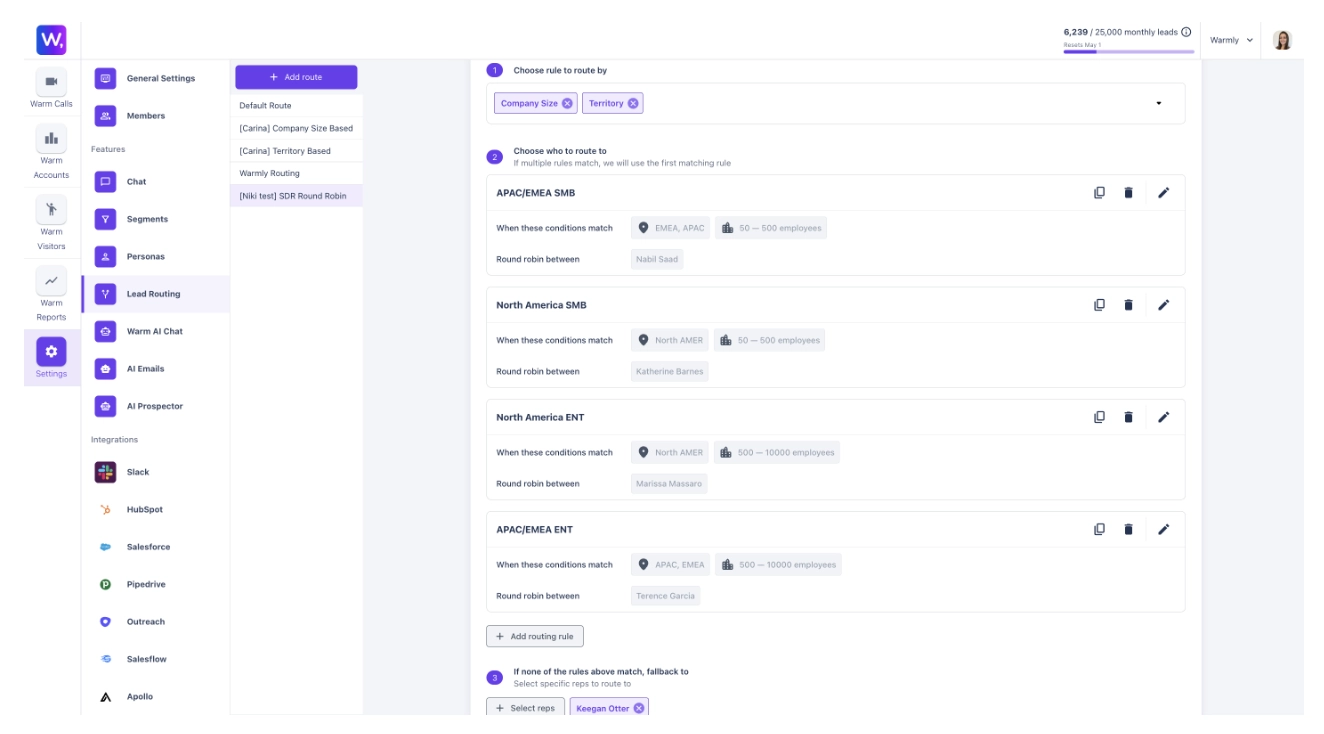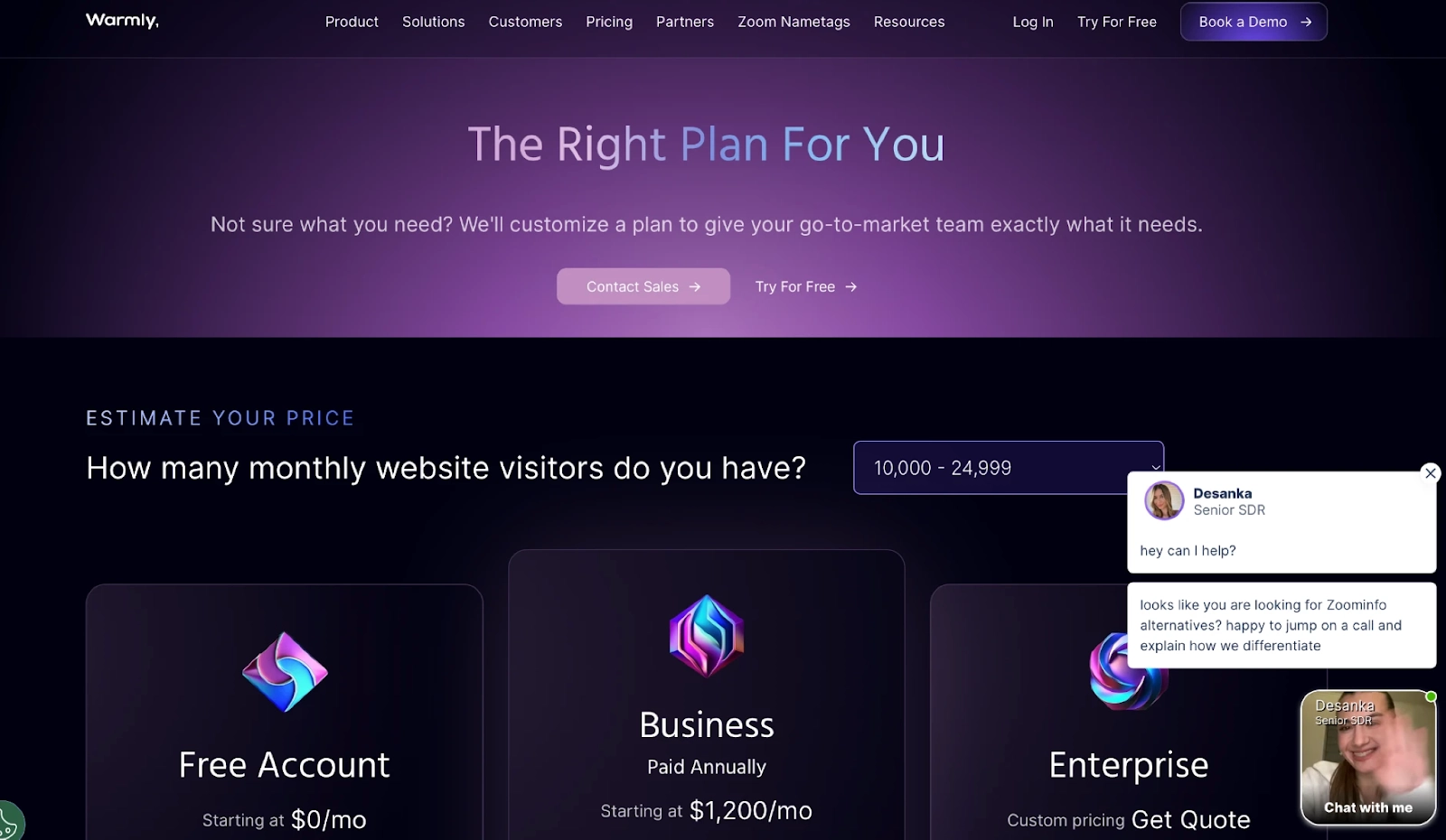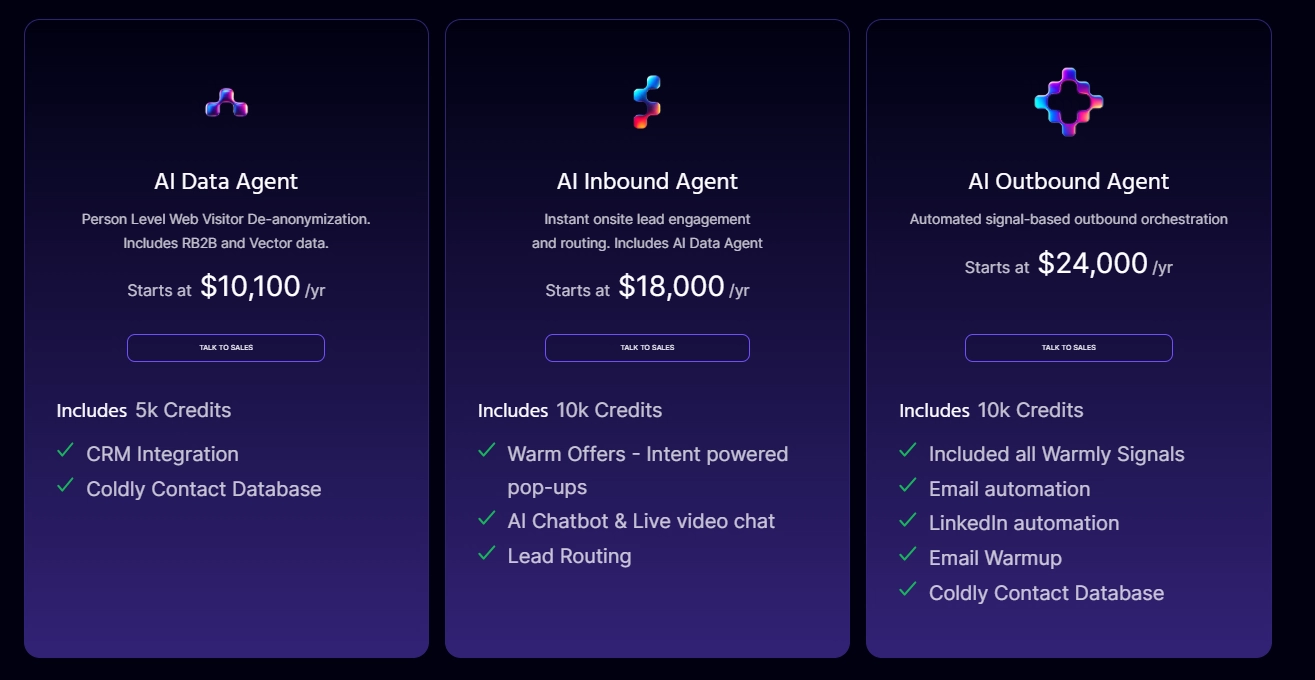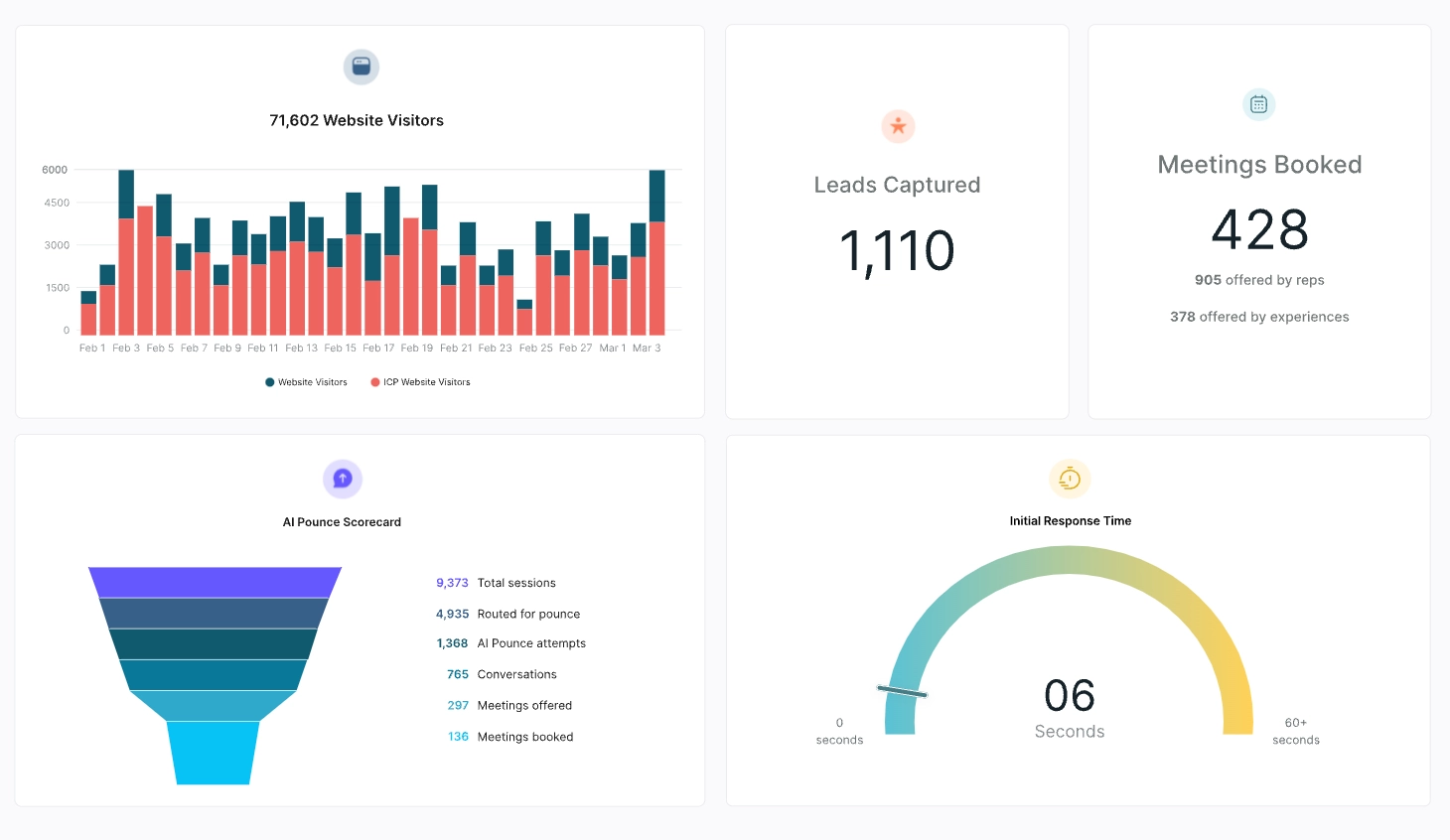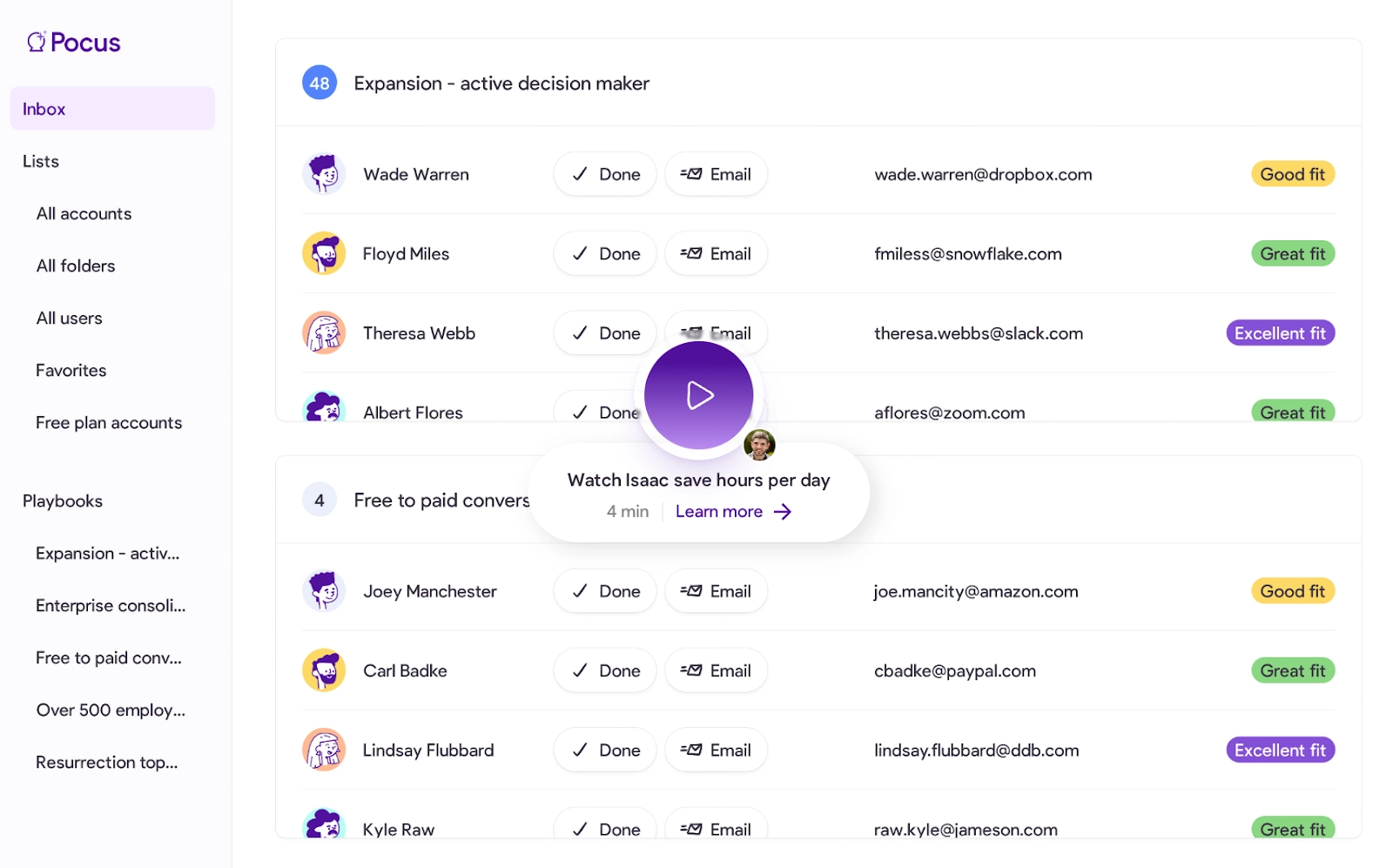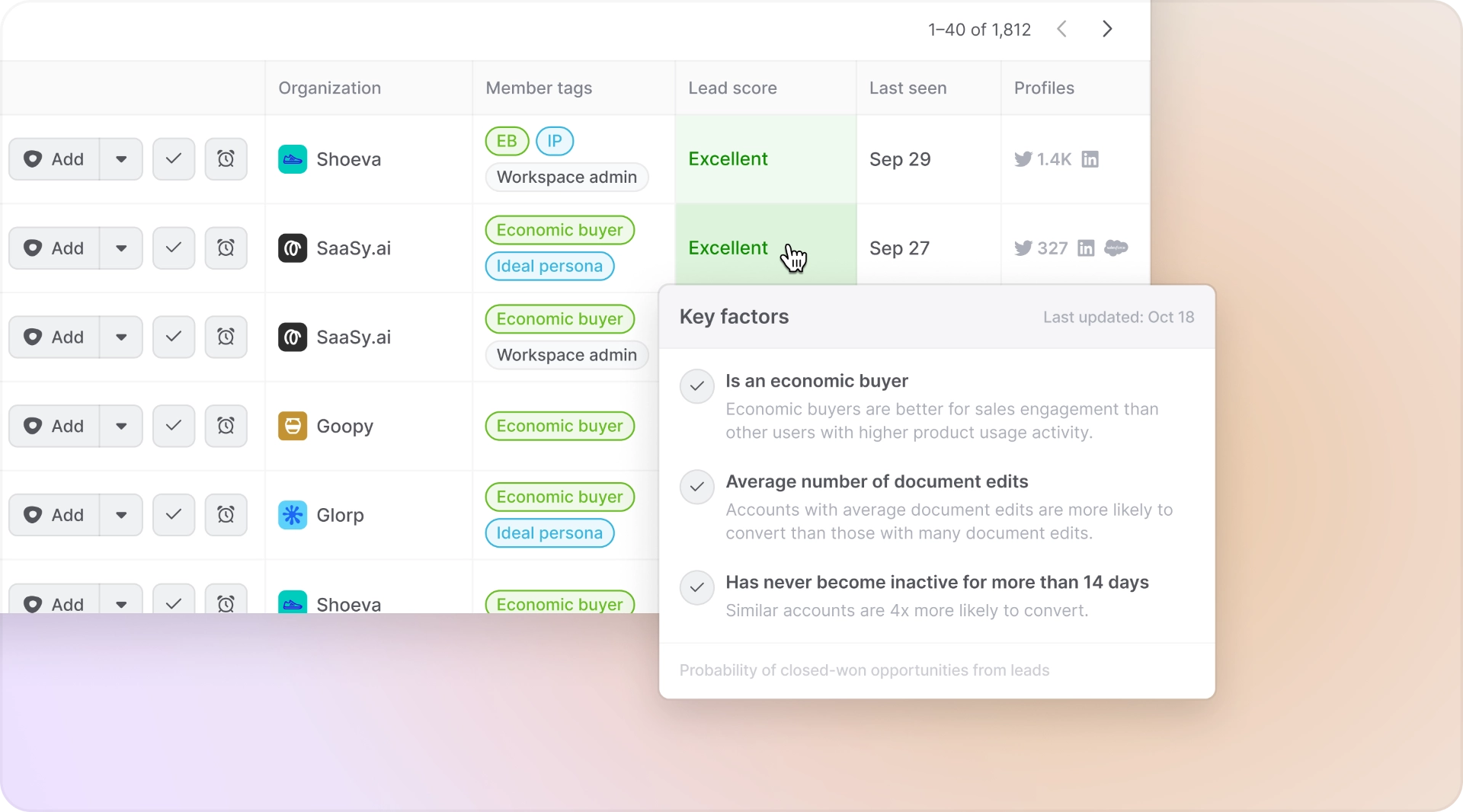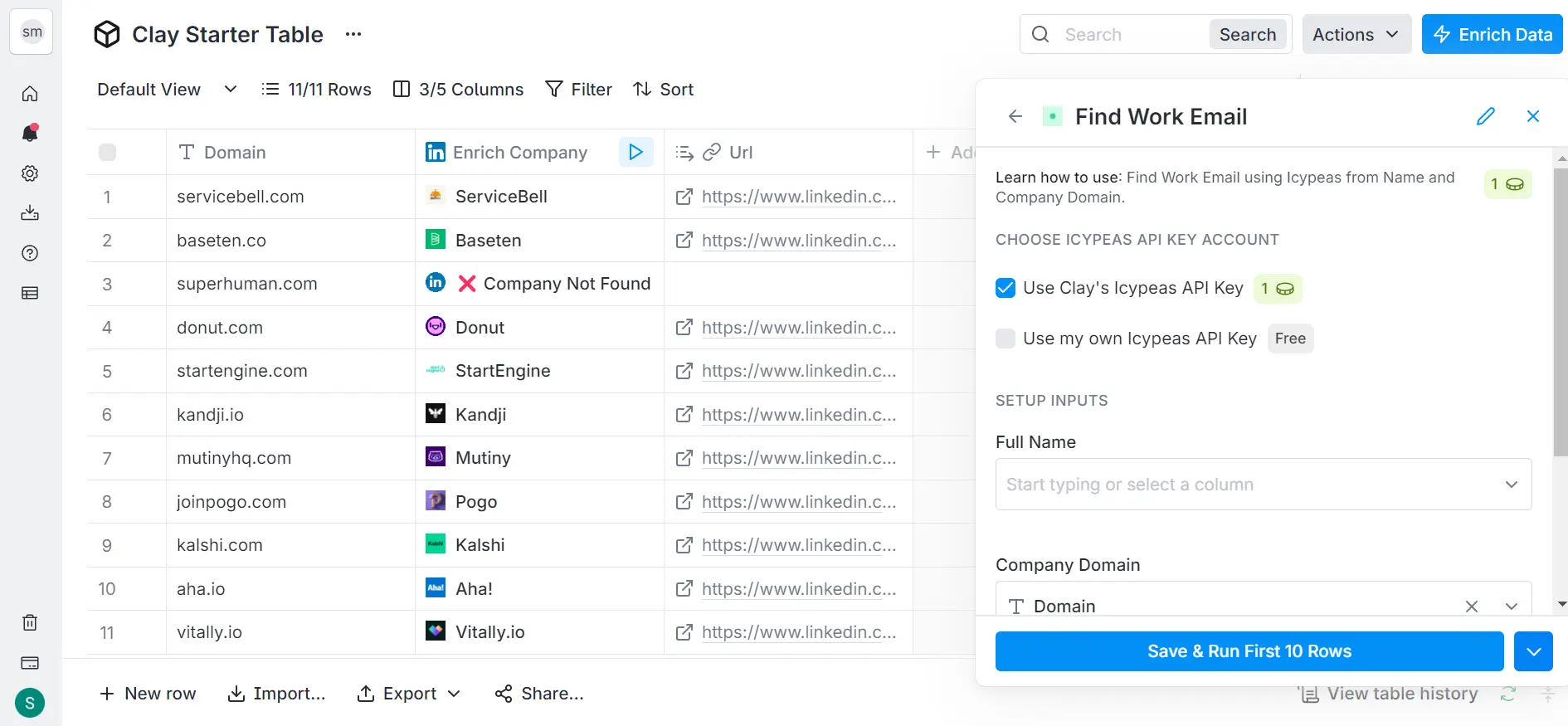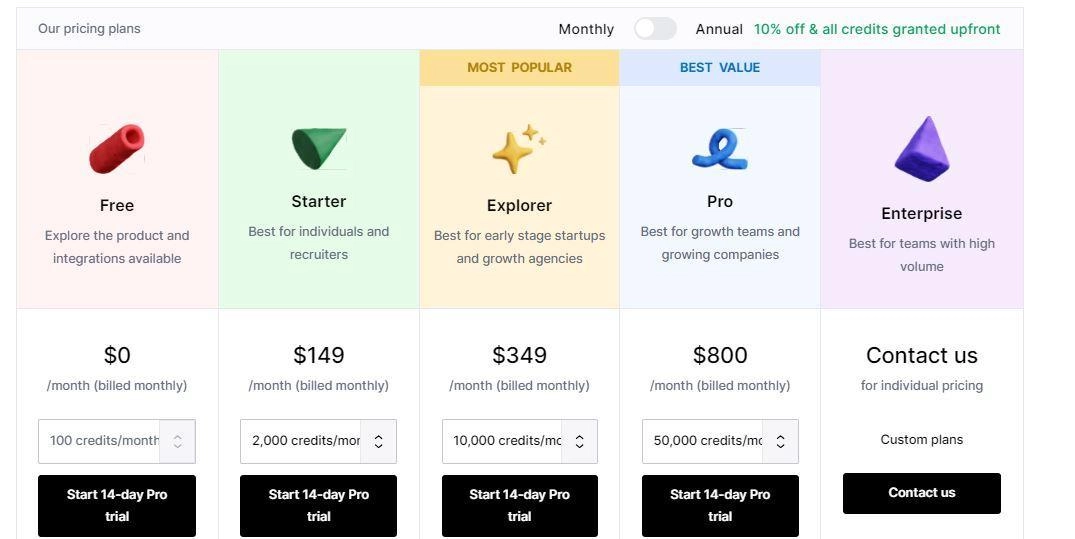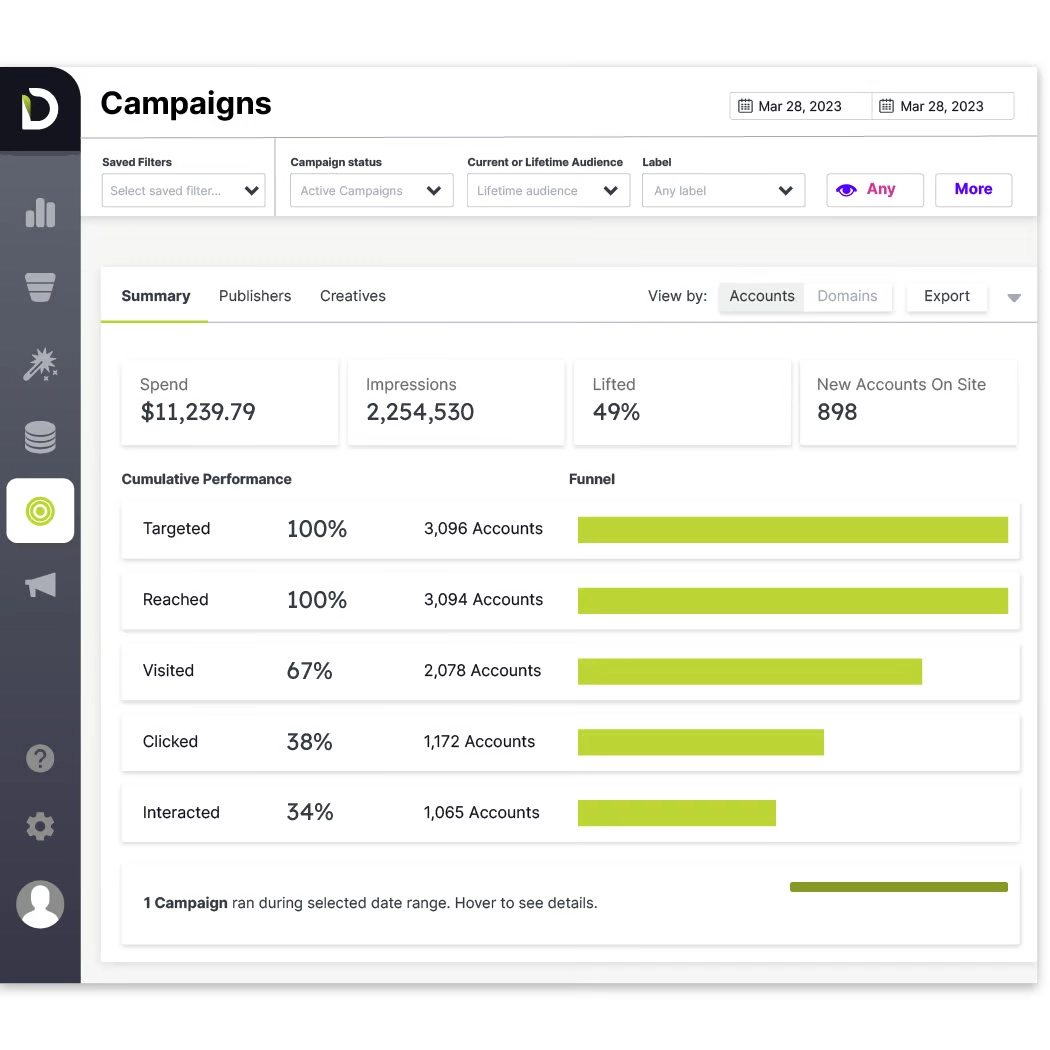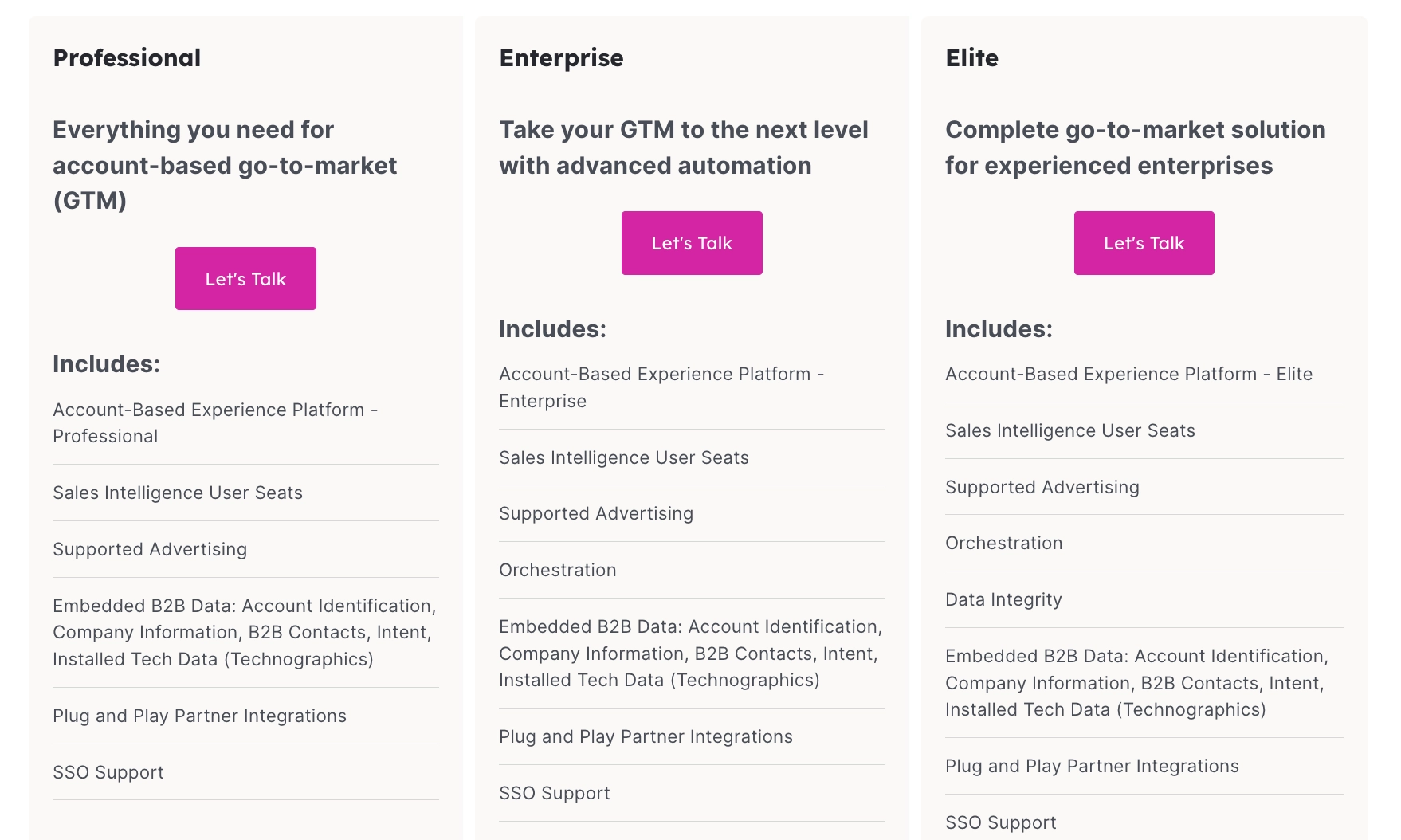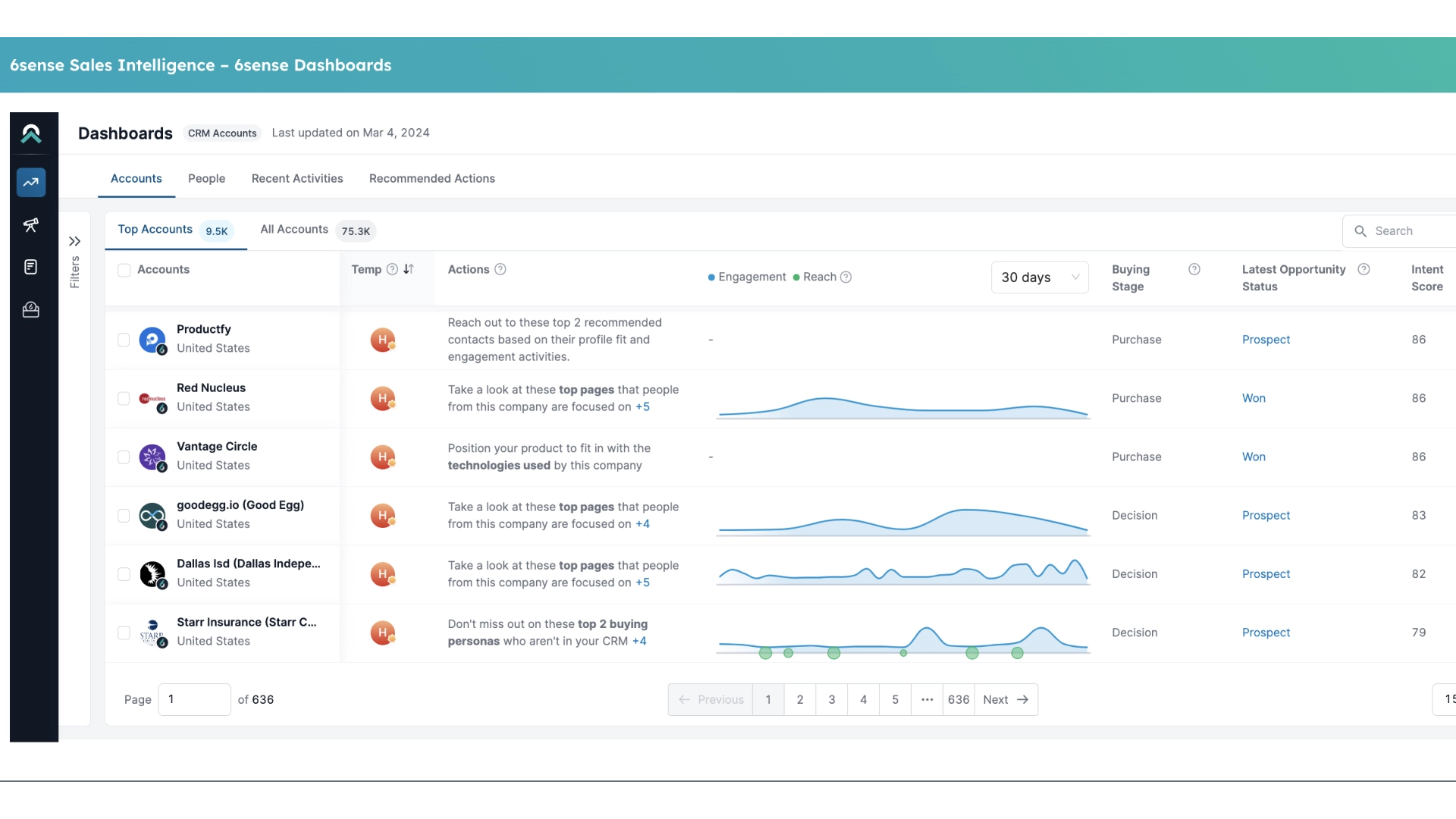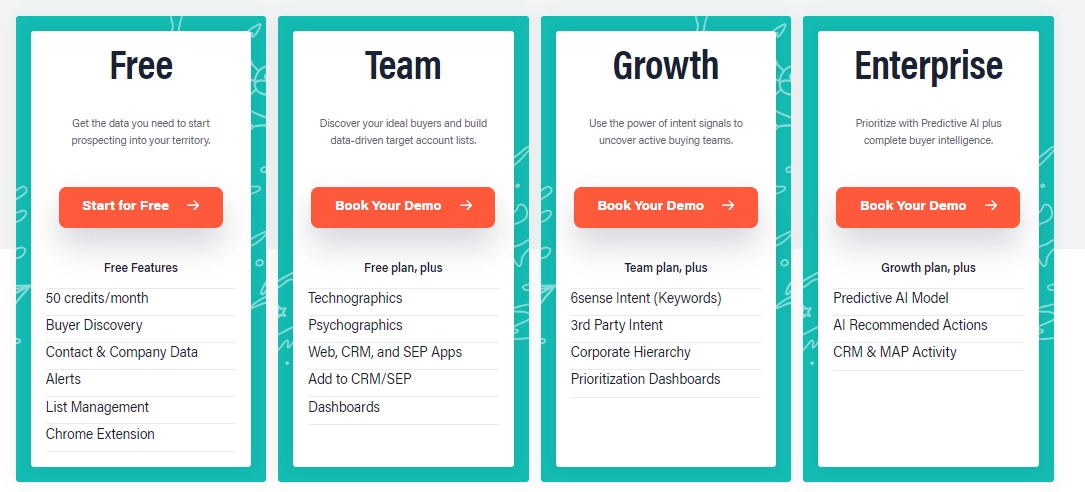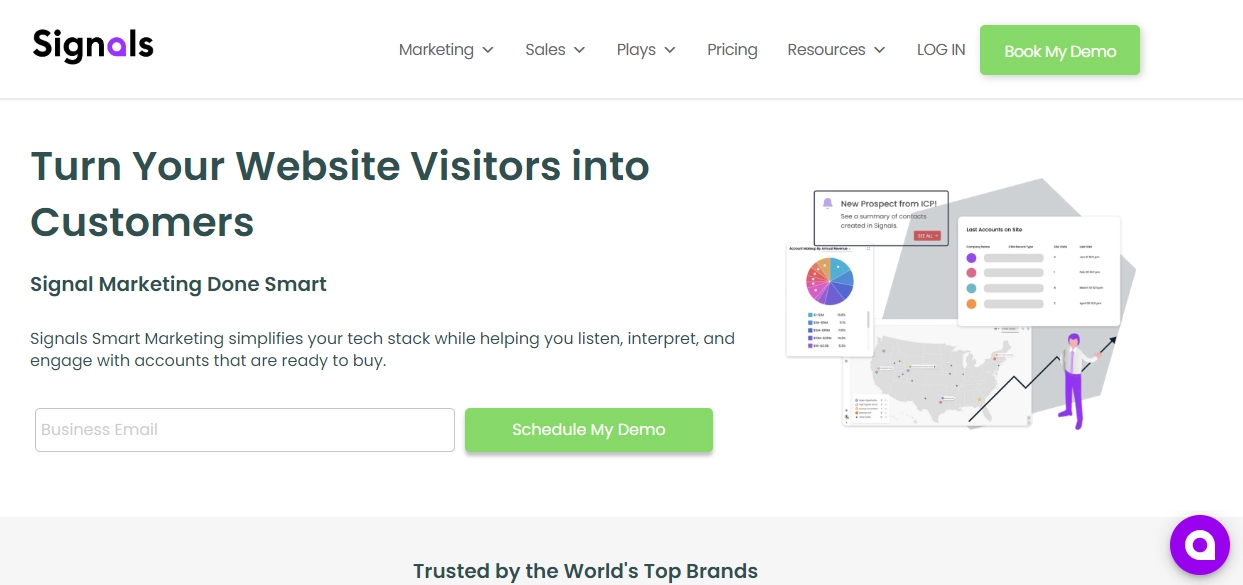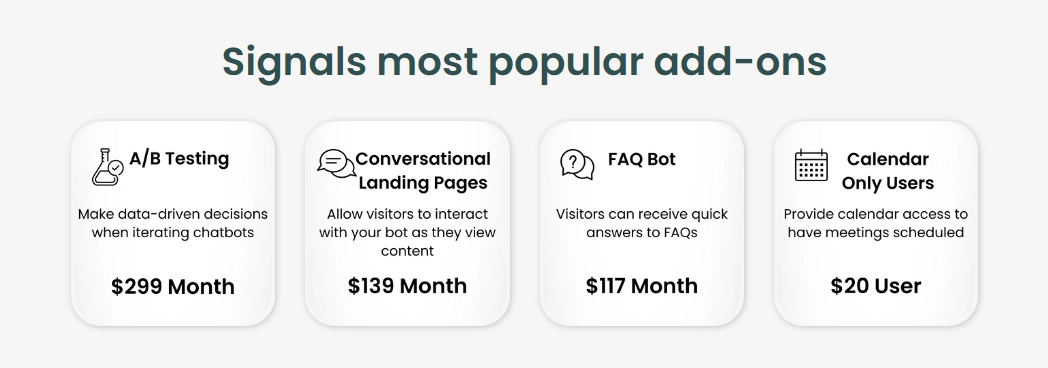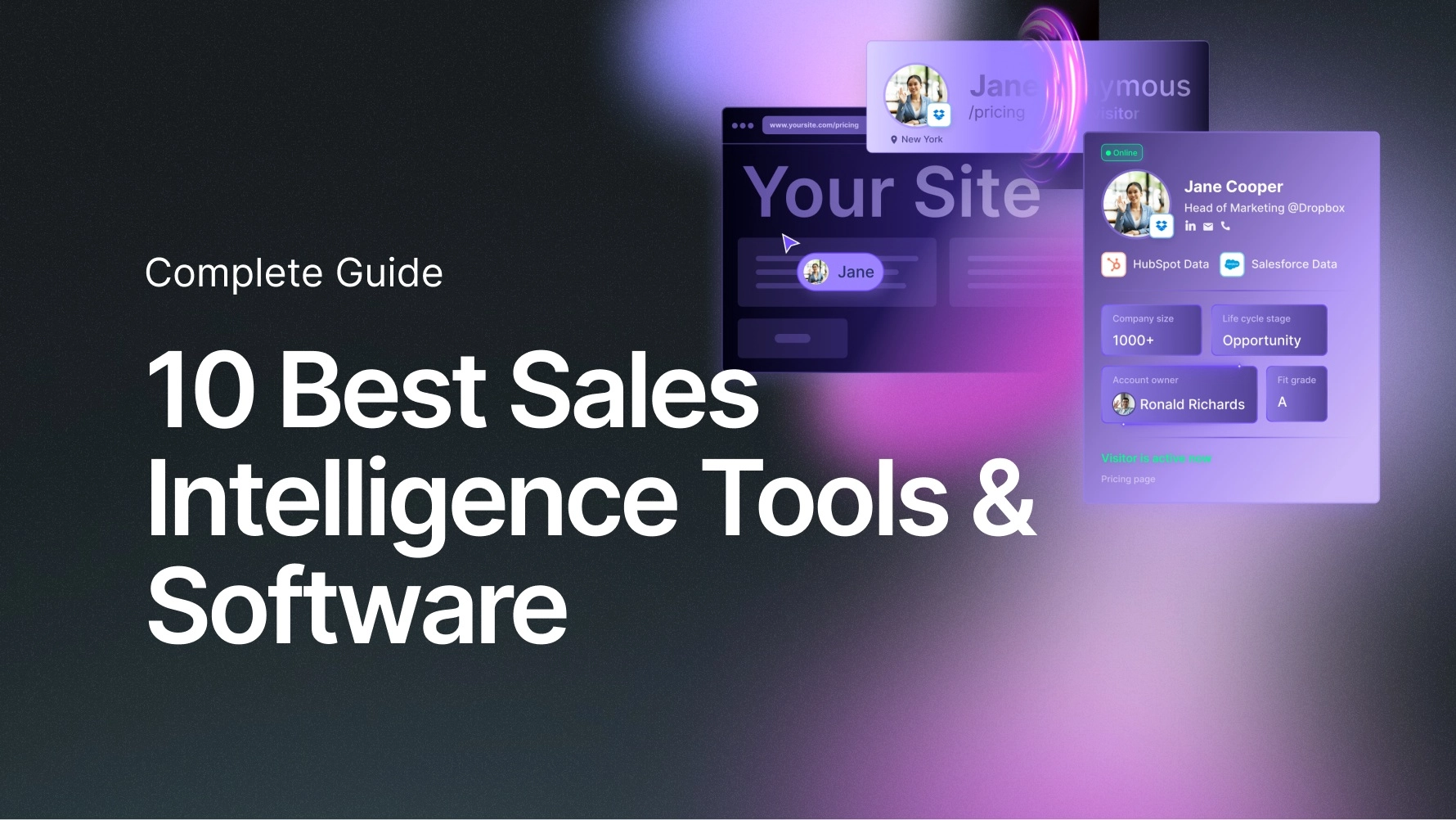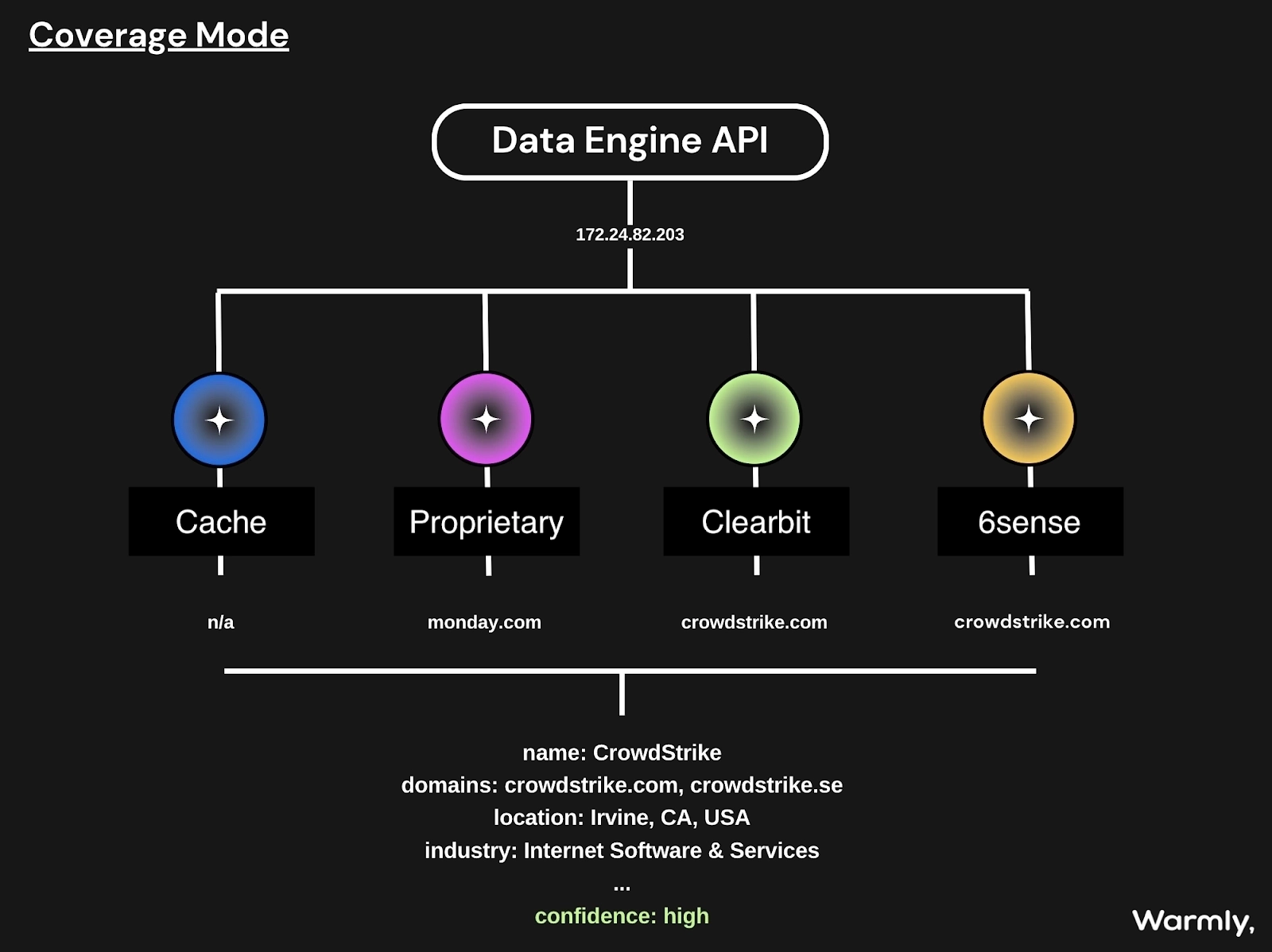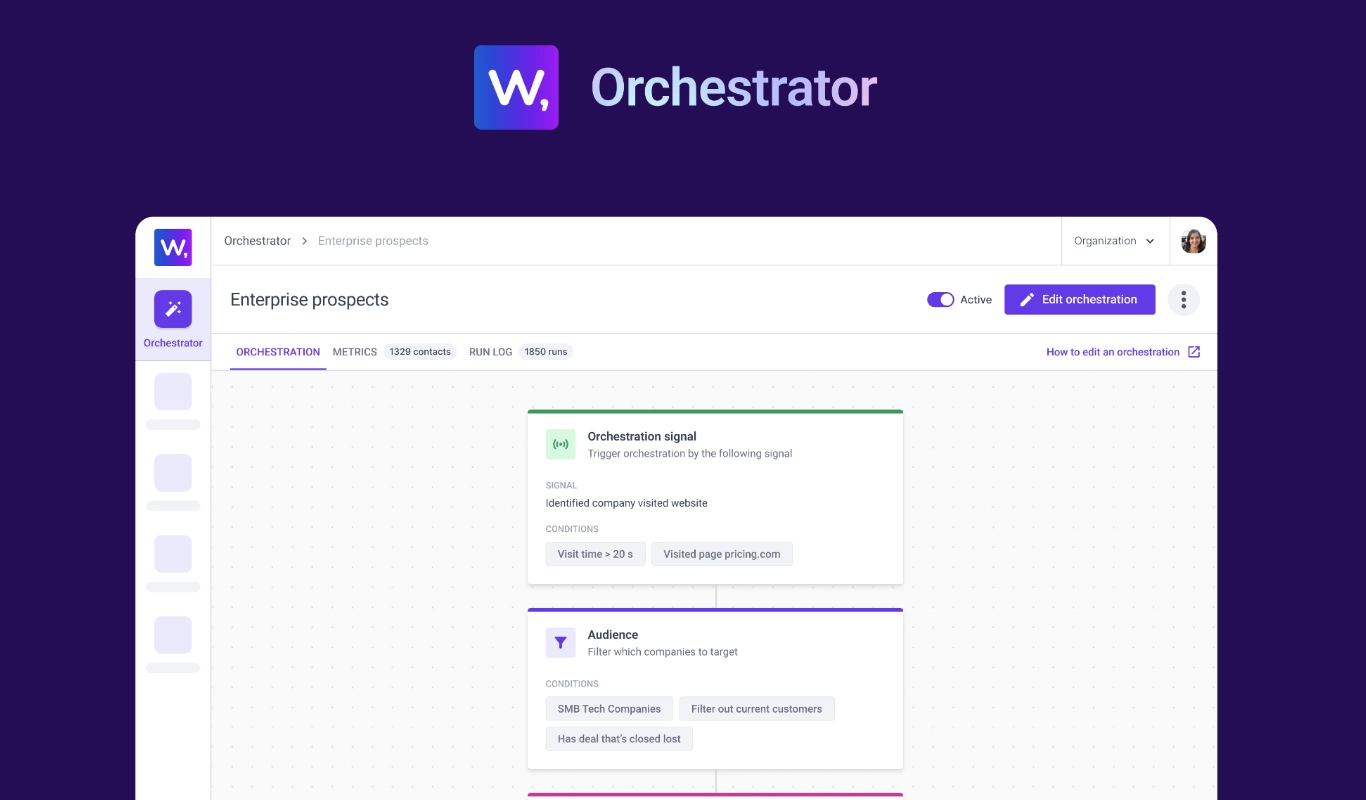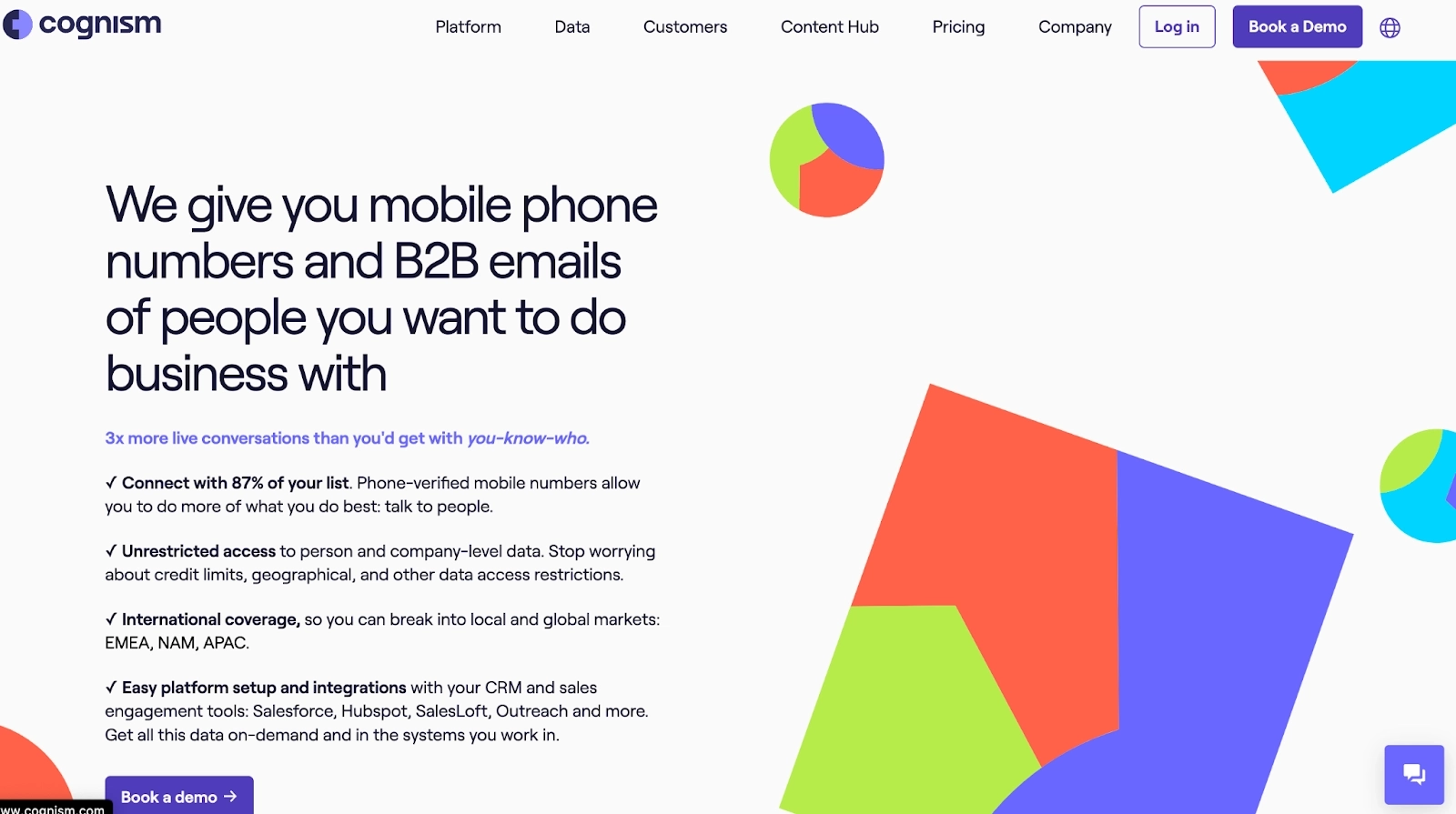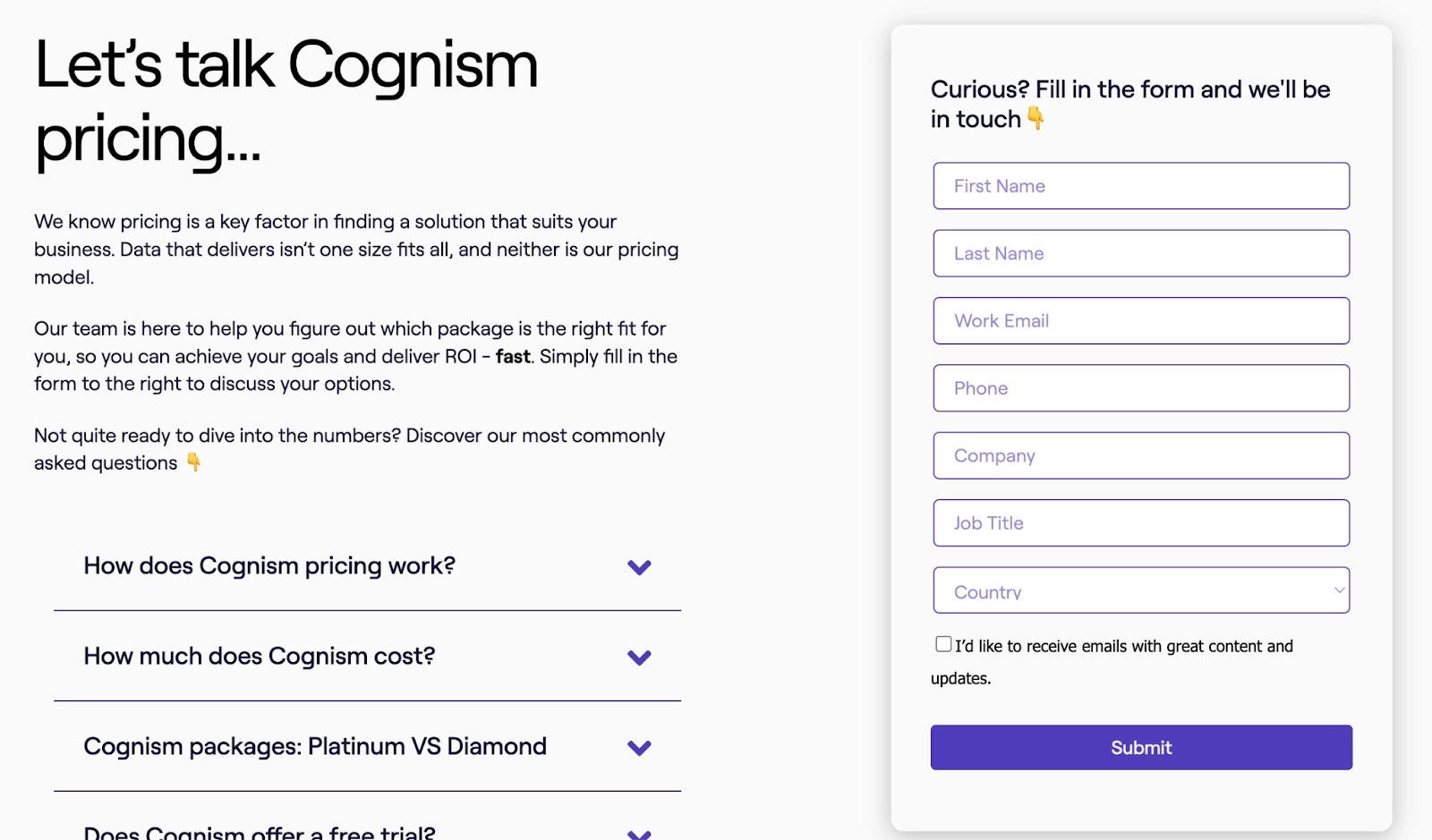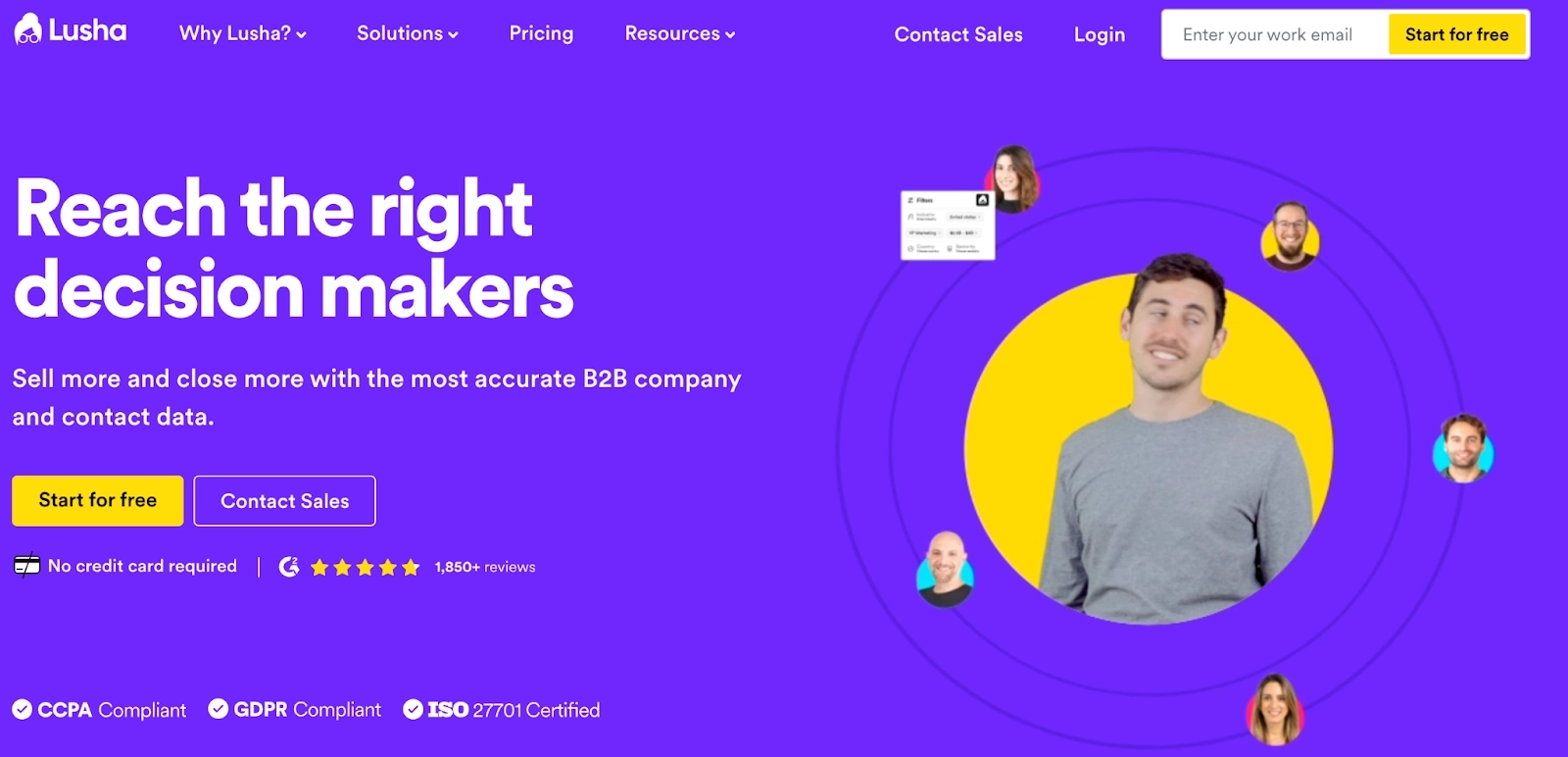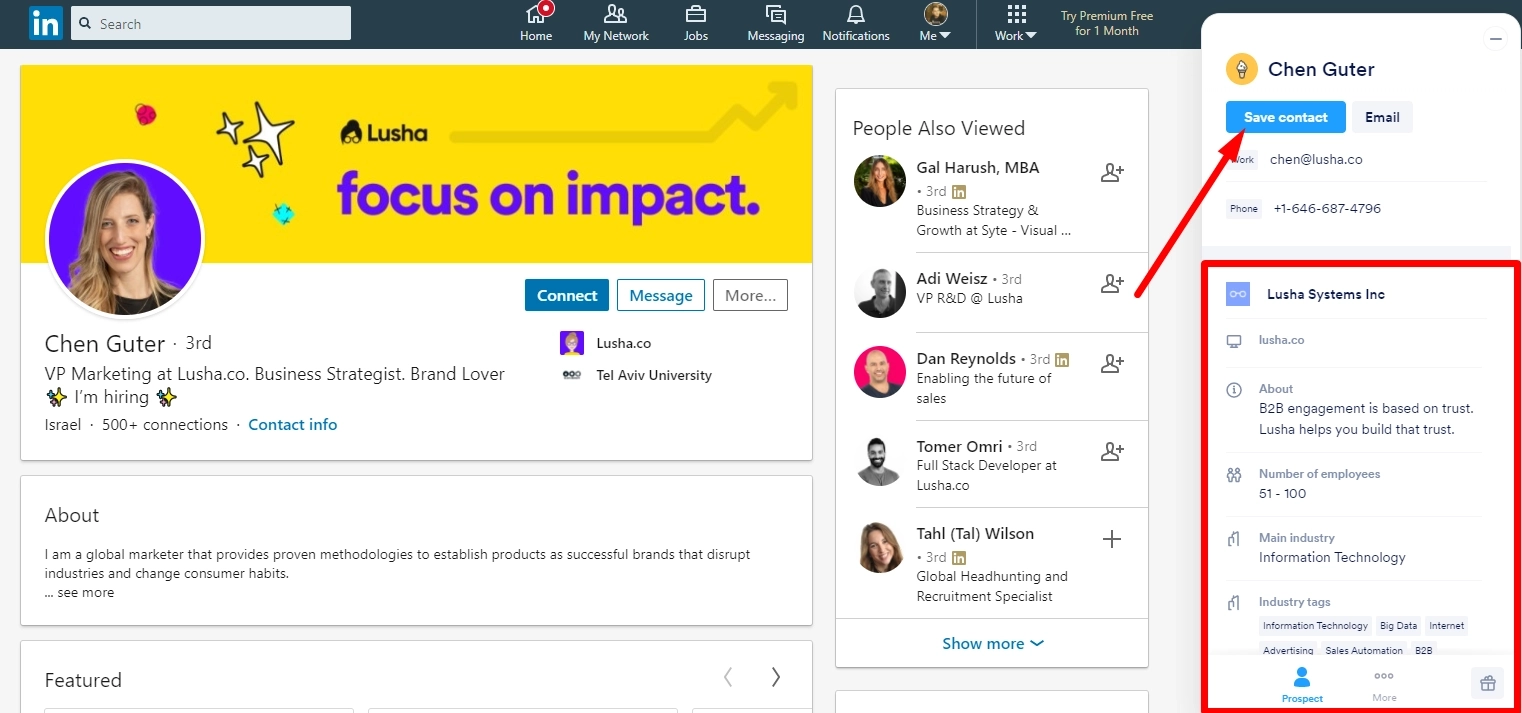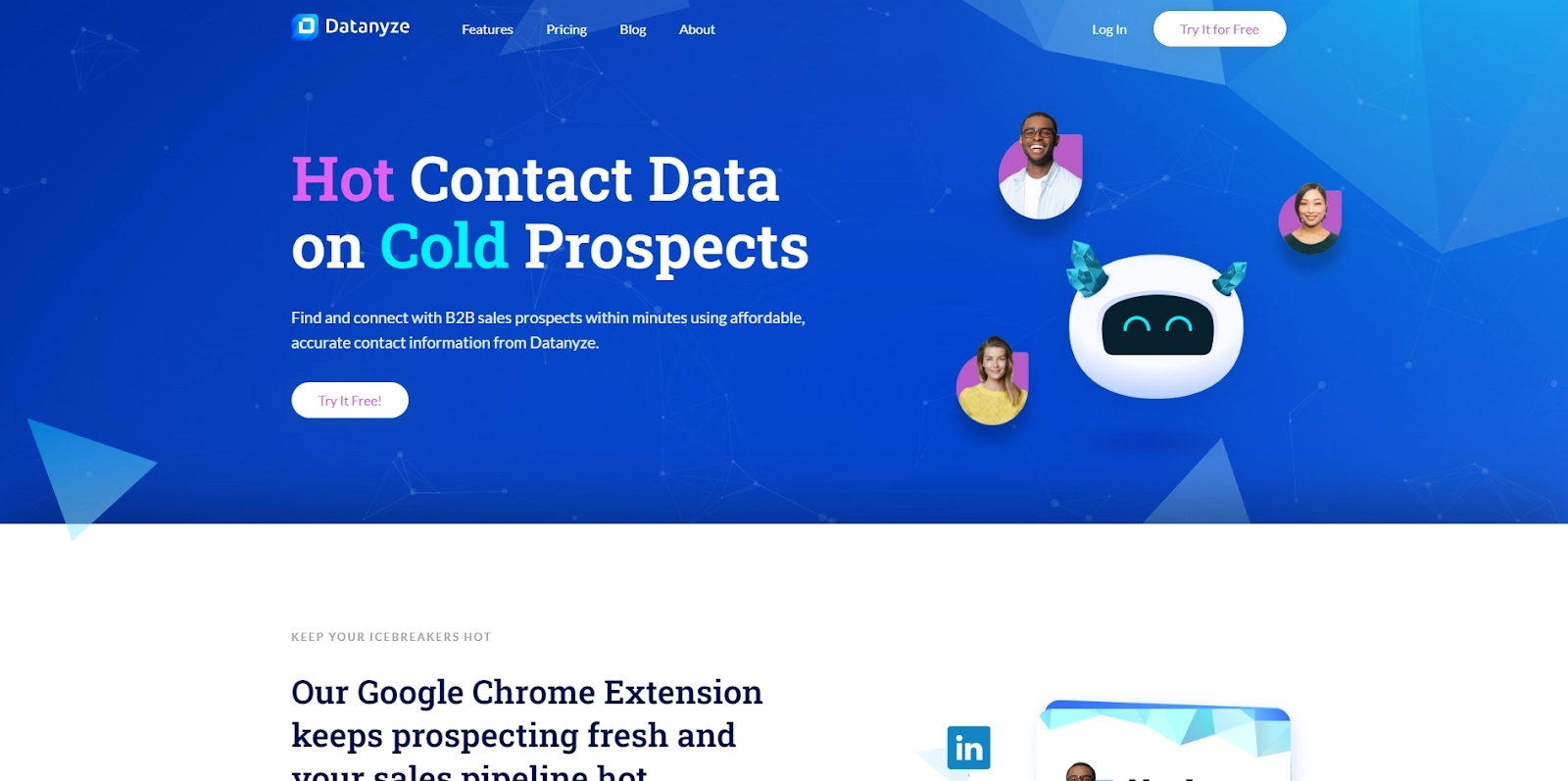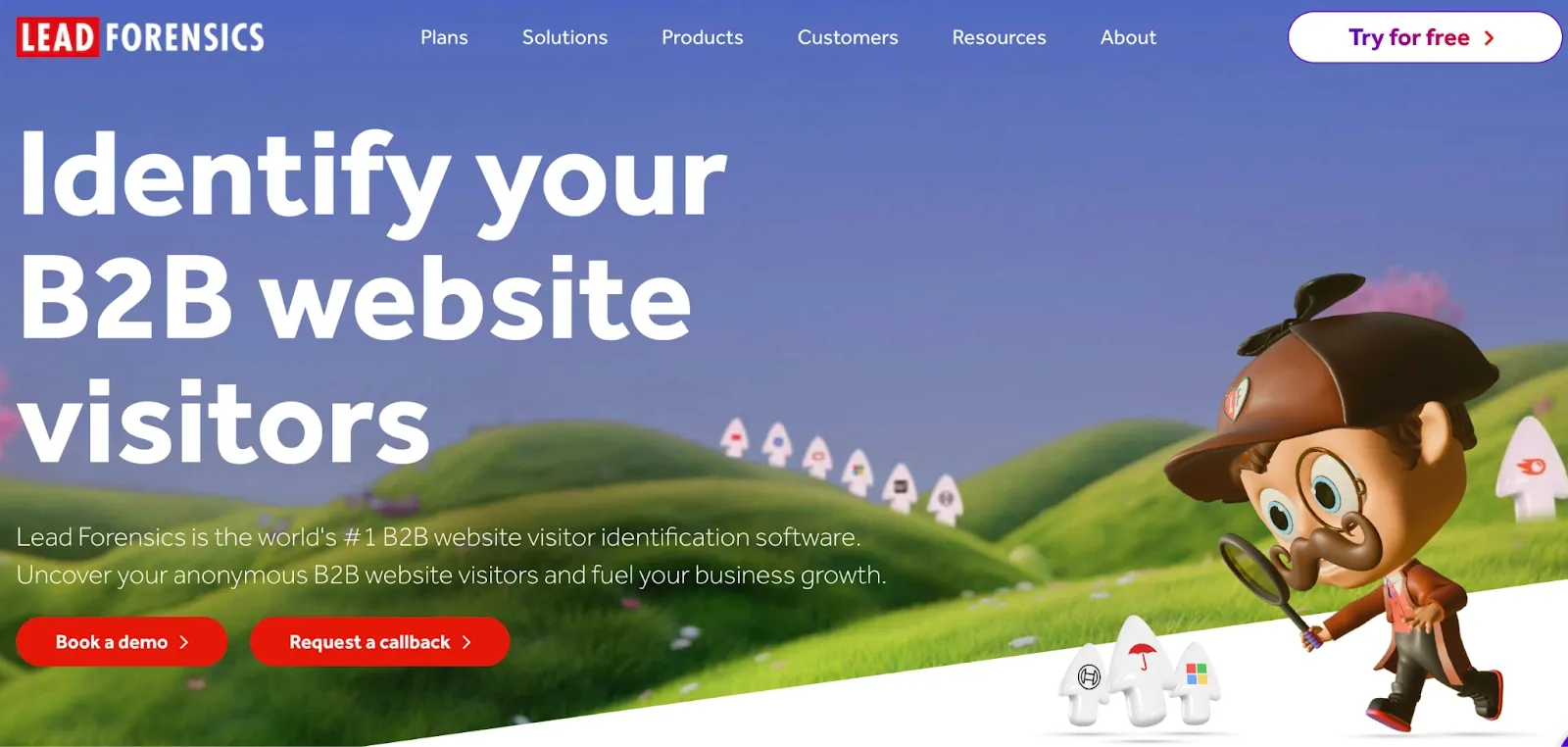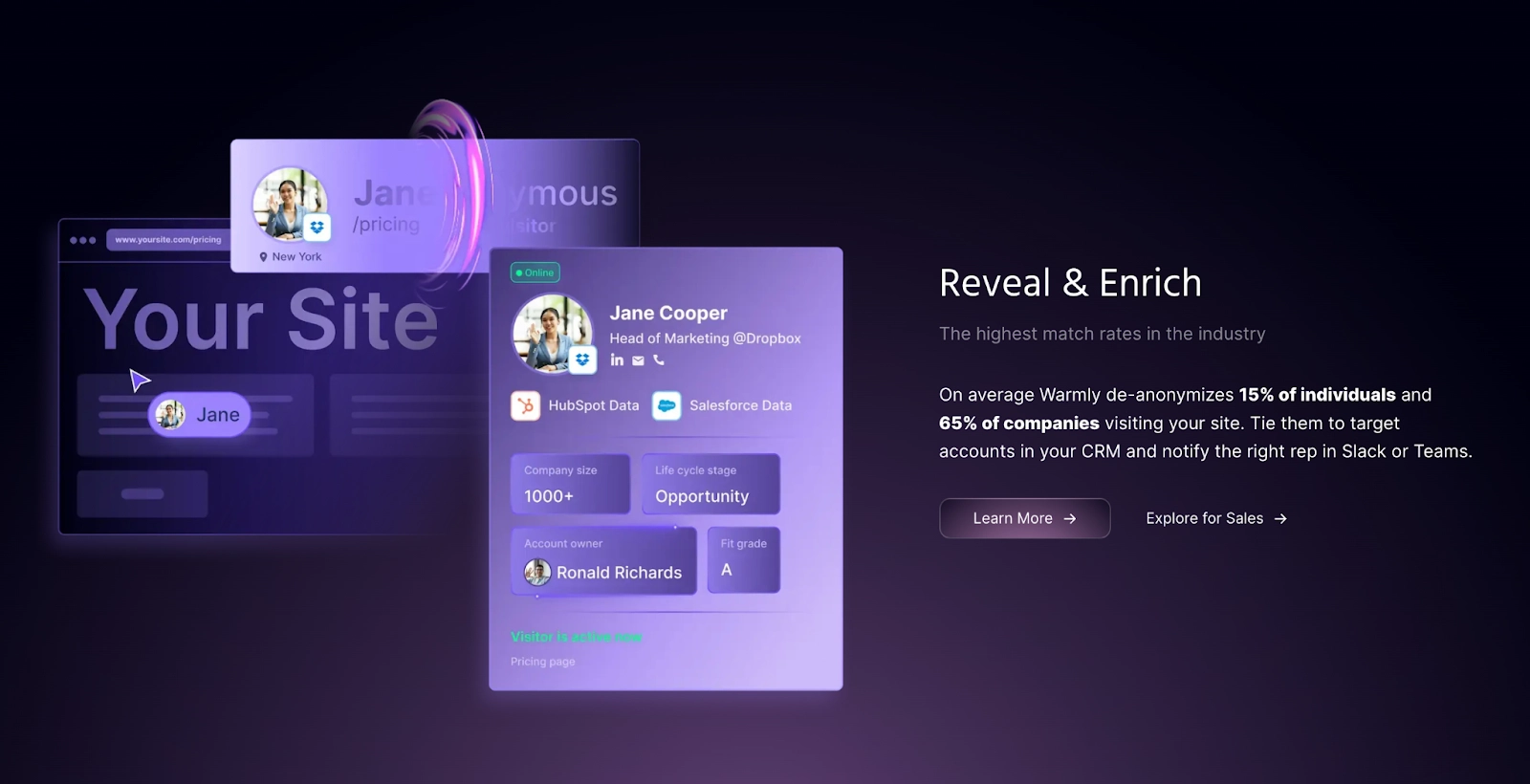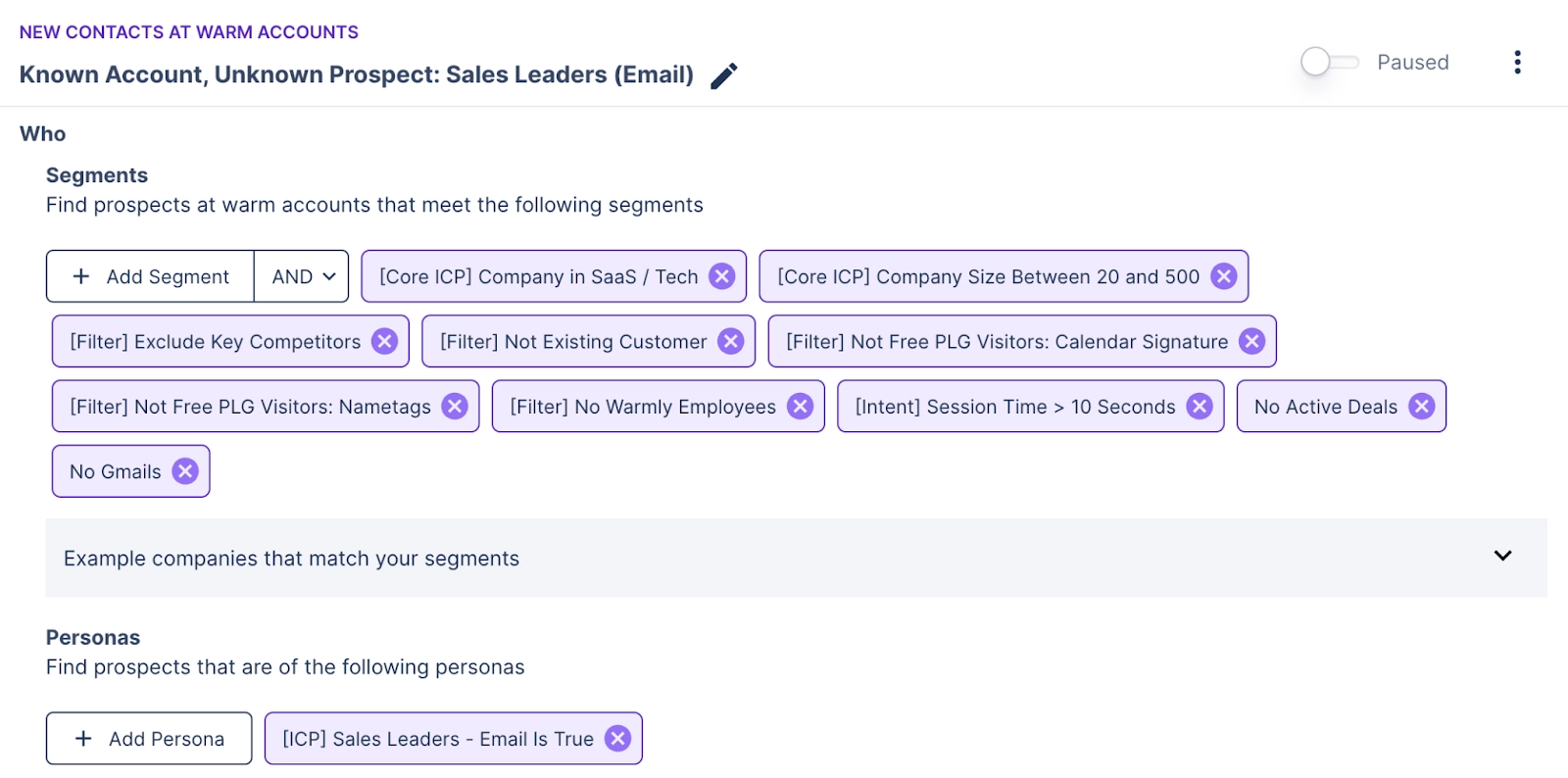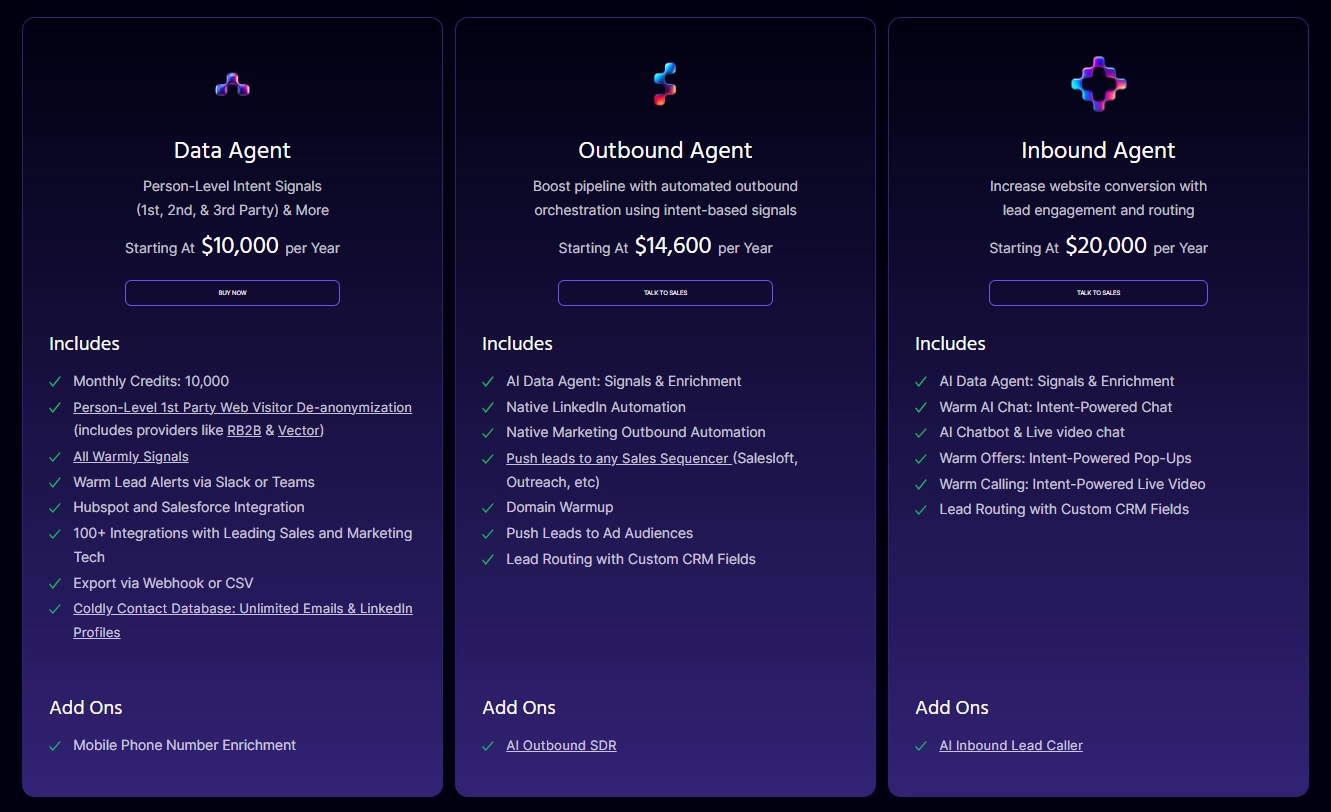
The Best 9 ServiceBell Alternatives & Competitors in 2024
Need to find the best ServiceBell alternative for your GTM team?
This guide reviews the top 9 ServiceBell alternatives and competitors, analyzing each platform to the tiniest details—from key features to pricing structures.
We took several steps to get you the info you need, like:
- Testing most of the software ourselves.
- Interviewing real users for a more detailed view of their UX and UI.
- Sifting through dozens of G2 user reviews to get a more complete idea of the overall customer experience.
Before we begin, let’s answer one key question.
Why Do You Need a ServiceBell Alternative?
ServiceBell is an “allbound” platform that provides options for both outbound and inbound sales and marketing.
As such, it has a few nifty features worth mentioning, such as:
- AI-powered parallel dialing features that let you dial up to 9 contacts simultaneously, with the AI distinguishing between actual humans and voicemail, allowing sales reps to focus on people.
- It detects first-party intent and surfaces high-value accounts that show the most interest in your product or services.

However, several downsides to ServiceBell compel many users to look for an alternative solution.
1. Limited integrations
ServiceBell is a relatively new platform, which is one reason it doesn’t integrate with many sales and CRM platforms.
It only integrates with the most popular CRMs, such as Salesforce and HubSpot, stranding users of other CRMs.

2. Prone to lagging and has a learning curve
One of ServiceBell’s upsides is its wide range of features for handling both inbound and outbound channels and engagement.
The downside is that having so many features packed into one product can make it:
- Difficult to master.

- Prone to glitches and lags.


3. Expensive
At first glance, ServiceBell’s plans don’t look that expensive, as there are lots of sales platforms with similar or even higher prices.
However, once you take a second look, you’ll notice a few things:
- It has separate plans for intent, outbound, and inbound sales, meaning your total subscription fee may be much higher than expected.
- If you want combined access to all its features, you’ll have to buy Allbound, its bundled plan.
- The disclosed prices are just starting prices, meaning they can go up.
- All plans are fairly limited in the number of monthly reveals (e.g., the first tier lets you reveal up to 5,000 visitors while the highest one reveals 25,000 visitors.

And now, without further ado, we present our list of the 9 best ServiceBell competitors in 2024.
What Are the Best ServiceBell Alternatives and Competitors in 2024?
1. Warmly - Reveals the hottest leads on your website and helps convert them.
2. Zoominfo - All-in-one platform for sales and marketing.
3. Apollo - Sales intelligence and engagement tool.
4. Drift - AI-powered chatbot.
5. Demandbase - Account-based marketing and sales software.
6. FlashIntel - GTM platform for revenue teams that leverages cold calling and sales automation.
7. Intercom - AI-driven customer support chatbot platform.
8. Chili Piper - Demand conversion platform with advanced lead routing capabilities.
9. CallRail - Call tracking and analytics that help improve your reps’ outbound performance.
1. Warmly

We’ll start with Warmly, which is our solution.
It’s understandable that you may have some doubts about our impartiality, but we made sure we reviewed Warmly with no bias whatsoever, just like any other platform on the list.
We know its strengths and limitations best, which is why we’re confident that many users will find it to be the best ServiceBell alternative.
If you don’t want to take just our word for it, you can always sign up for Warmly’s free plan and try it out for size firsthand.
Now that we cleared that up, let’s get to reviewing Warmly!
Warmly is a revenue orchestration platform built to help users detect high-intent leads that land on their website and engage them while they’re still hot.
Several features enable Warmly to achieve this.
Feature #1: Website intent
Unlike most website visitor identification platforms, Warmly identifies individual as well as company visitors, allowing you to pinpoint the exact person on your website right now.
However, even when Warmly identifies only company accounts, you’ll still be able to easily discern who the vital stakeholders are since Warmly enriches each revealed visitor with essential B2B data, including:
- Firmographic data (company location, job titles, buying committees, email addresses, phone numbers, etc.).
- Technographic data (a business’s tech stack).
- CRM data ( account owners, ongoing and closed deals, previous interactions with your reps, etc.).
- SEP data (e.g., interactions with specific outreach campaigns).
- And much more.

But Warmly doesn’t stop at the basics, as it also provides detailed intent data on every identified lead:
- First-party intent data, such as pages visited, time spent on each, filled out forms, etc., because visiting and staying on high-value pages, like pricing, usually indicates that you’re dealing with a red-hot lead.
- Third-party intent data that tracks a trail of digital breadcrumbs your visitors left on the web - such as recently researched topics, engagement with certain social posts or ads, visits to competitors’ websites, etc. - which sends a strong signal they’re ready to convert.

Tapping into both first- and third-party intent data provides a much more complete picture of your hottest leads right now, allowing your sales reps to engage them immediately.
Moreover, having detailed intelligence on each lead, including buyer intent data and other information warmly pulled on them, enables reps to create highly personalized sales strategies bound to increase conversion rates.
Learn how to identify website visitors with Warmly here.
Feature #2: Automated outbound sequences
Losing quality leads just because you don’t have enough SDRs to reach out at the right time is a reality many businesses face.
This is why Warmly lets you automate your outbound sales while ensuring that a human can step in whenever necessary.
With Warmly’s Orchestrator, you can automatically add leads who match certain criteria to one of two outbound sequences:
- Sending them an email.
- Connecting with them on LinkedIn.

You can build all kinds of Orchestrator flows in just several steps:
- Decide which action will trigger the workflow (e.g., a company lands on your website, an important account changes jobs, researches solutions similar to yours, etc.).
- Specify which companies to target (e.g., those that match your ICP, show high-intent behavior, etc.) and which you want filtered out (e.g., existing customers).

- Specify the personas you want to contact from each company (e.g., marketing executives, content managers, etc.) and how many individuals from each account should be targeted.
- Choose the sequence you want (send email, connect on LinkedIn, add to CRM - or all three).
- End the workflow and click “Publish”.
You can also set up Slack alerts that will notify the SDR of your choice when a lead comes to your website through one of these outbound campaigns, ensuring they’ll be handled by the most adequate rep.
Feature #3: Live inbound chat
Warmly lets you monitor how leads interact with your website in real-time, enabling you to engage them via text or video chat when they exhibit high-intent behavior.
The “Warm Calls” section of Warmly’s dashboard shows who’s visiting your website right now and provides in-depth data on each identified visitor.
When reps recognize an account that fits your ICP or detect an account that’s visiting high-intent pages, they can:
- Send a contextual chat message, emphasizing they’re talking to a real human.
- Initiate a video call then and there.

Check out our Warm Calls best practices to ensure high response rates.
However, your SDRs won’t always be there at the right time to chat up high-value leads.
To avoid missing out on good opportunities, you can also leverage Warmly’s AI Chat, instructing it to engage:
- All website visitors.
- Only some segments (e.g., those that match your ICP, show high intent, etc.).
The chatbot will tailor its messaging to each identified visitor, providing them with a personalized experience.

Just like with the outbound feature, you can keep a human in the loop by setting up Slack alerts to notify SDRs when:
- A target account lands on your website.
- When a lead asks to speak with a real human or makes a high-intent query in the chatbot.
Pricing
Warmly has a generous free forever plan that lets you reveal up to 500 people and companies visiting your website. This plan is perfect for getting a taste of one of the platform’s basic features.
If you expect higher traffic volumes and need more advanced capabilities, there are three paid plans to choose from:
- Startup: $700/mo, includes 3 users, up to 10,000 monthly visitors.
- Business: From $1,440 to $1,740 per month, depending on the number of visitors you expect to have. It includes 10 seats.
- Enterprise: Custom plan. Created for users with an estimated traffic of 100,000+ visitors per month who need more customization. Includes 20 seats, advanced AI personalization, custom integrations, etc.

Note: All paid plans provide access to all of Warmly’s features and include seamless integrations with sales intelligence tools such as Clearbit, Bombora, and 6Sense, allowing you to get a bundle of products at the price of one.
Integrations
In addition to these data solutions, Warmly also integrates with OpenAI and most modern SEP and CRM platforms, meaning it will easily fit into any business’s existing tool stack.

How does Warmly compare to ServiceBell?
Both ServiceBell and Warmly identify website visitors and enrich them with intent data.
However, Warmly is focused on maximizing your website’s lead generation and conversion potential, with all its features optimized for achieving these goals.
ServiceBell's features are a bit all over the place. It tries to cover both live dials and website video chats equally well but does not really succeed.
As a result, its platform often lags due to too much going on at once.
The biggest difference, however, is ROI.
With ServiceBell, the number of monthly reveals you get is far too small for the cost. In contrast, Warmly includes all features and integrations in all its pricing plans and provides significantly more monthly credits.
The conclusion?
If you rely on cold calling, then ServiceBell is a superior choice.
If you want to build data-powered workflows that convert more pipeline, try Warmly.
Pros & Cons
✅ Identifies individuals and companies visiting your website.
✅ Enriches leads with intent data and essential B2B data.
✅ Outbound sales on autopilot.
✅ Live video and text chat.
✅ All paid plans include all features + deep integrations with several data providers.
❌ Annual pricing only.
2. Zoominfo

Best for: Managing your sales funnel from top to bottom.
Similar to: Apollo
Zoominfo takes a holistic approach to sales management, providing a wide range of powerful features built to help talent, marketing, and sales teams handle critical business operations.
Its biggest strength by far is its massive B2B database, making Zoominfo a favorable alternative to ServiceBell for users interested in sales intelligence coupled with a variety of other functionalities.
Features

- Large B2B database with over 260M professional and 100M company profiles and 135M verified phone numbers.
- Chorus conversational intelligence for analyzing all customer conversations, such as calls, emails, meetings, etc.
- Automated sales and marketing workflows for putting multichannel outreach on autopilot.
Who is it for?
Zoominfo is best suited for enterprise businesses that need to efficiently manage a broad range of sales processes.
Pricing
Zoominfo has separate plans for Sales, Marketing, and Talent teams.

No prices are disclosed, so you’ll have to contact its sales team for a custom quote.
The exact price will depend on:
- Features and functionality.
- Number of licenses.
- Credit usage.
- Other factors.
Pros & Cons
✅ Identifies companies visiting your website.
✅ Wide range of sales engagement options, ranging from web chats and forms to automated outreach sequences.
✅ Excellent coverage of NAM B2B data.
❌ Expensive.
❌ Can be overwhelming, especially for smaller teams.
❌ Frequent issues with data accuracy.
3. Apollo

Best for: Sales intelligence and CRM enrichment.
Similar to: Zoominfo
Apollo is a B2B sales intelligence, prospecting, and engagement platform.
Similarly to Zoominfo, it offers both a B2B database and sales orchestration options, allowing you to handle everything from prospecting to lead nurturing at a more affordable price.
Therefore, it’s a solid ServiceBell alternative for users who need to streamline the entire sales cycle from a single point of control without necessarily spending a fortune
Features

- B2B database with 275M contacts and 73M companies with solid international coverage.
- Various outbound sales engagement options, including automated LinkedIn and email outreach and cold calling coupled with auto call recordings, transcripts, and CRM logs.
- Monitors and improves email deliverability and has an AI-powered email writing assistant.
Who is it for?
SMBs looking for a well-rounded outbound sales solution.
Pricing
Apollo has a free forever plan that includes unlimited email finder credits, 5 phone number credits, and 10 contact export credits.
If you need more, you can upgrade to one of three paid plans:
- Basic: $59 per user per month
- Professional: $99 per user per month
- Organization: $149 per user per month

Note: Professional and Basic plans come with a 14-day free trial.
Pros & Cons
✅ Advanced filtering options for more targeted prospecting.
✅ Good data accuracy.
✅ Lets you build automated outreach sequences.
❌ Dual credit system (you spend one credit for revealing an email address and another for getting a phone number), which scales badly.
❌ Best features available only on its higher tiers.
4. Drift

Best for: Conversational sales and marketing.
Similar to: Intercom
Drift is an AI-powered chatbot platform that engages your website visitors and detects high-intent queries and responses.
It’s a good ServiceBell alternative if you need a chatbot first and foremost.
Features

- Customizable chatbots powered by Generative AI.
- Reveals website visitors’ intent scores and notifies reps so they can focus on high-intent ones.
- Lets you create personalized videos, emails, and messages at every stage of the customer’s journey and engage them live.
Who is it for?
Mid-size to enterprise-level businesses interested in getting an automated SDR present on their website 24/7.
Pricing
Drift has three plans:
- Premium: $2,500 per month
- Advanced: Pricing not disclosed
- Enterprise: Custom price

Drift doesn’t offer a free trial.
Also, some of its most powerful features, such as intent scoring, are add-ons charged extra.
Pros & Cons
✅ User-friendly.
✅ Has a mobile app for on-the-go access.
❌ Very expensive.
❌ Prone to crashes and glitches.
❌ Often generates low-quality interactions that lead nowhere.
5. Demandbase

Best for: Account-based marketing.
Similar to: FlashIntel
Demandbase is an ABM tool that lets you build automated marketing workflows on top of intent signals.
It’s a good ServiceBell alternative if you want to leverage intent data for orchestrating marketing operations.
Features
- Real-time website personalization lets you customize your target accounts’ customer journey by displaying tailored copy, offers, images, ads, etc.
- Account-based marketing orchestration enables you to create customizable workflows (e.g., CRM record edit/creating new ones, trigger plays in marketing automation solutions, etc.) targeting specific accounts/audience segments.
- Tracks and detects buyer intent signals across channels.

Who is it for?
Marketing teams looking for an ABM solution to target specific accounts and audiences more efficiently.
Pricing
Demandbase has three essential plans that include access to all its core features:
- Professional
- Enterprise
- Elite

No prices are published for any plan.
Also, some of Demandbase’s features, such as its B2B data and personalization options, are available as add-ons only.
If you’re not interested in paying for all of Demandbase’s products, the platform lets you buy “A La Carte,” i.e., purchase only those you need.
In that case, you can choose from 4 product packages:
1. ABX, which includes 3 plans:
- Professional
- Enterprise
- Elite
2. Advertising, that comes with two plans:
- Self-Serve
- Supported
3. Sales Intelligence with:
- Enterprise
- Elite
4. Data

No prices are published for these either, so you’ll have to contact sales for more details.
Pros & Cons
✅ Lets you build data-driven marketing workflows.
✅ Advanced analytics features that track and analyze target accounts’ online interactions.
❌ Difficult to navigate.
❌ Expensive.
❌ Limited integrations.
6. FlashIntel

Best for: Sales intelligence and data enrichment paired with handling outbound sales.
Similar to: Apollo, Zoominfo
FlashIntel is a GTM solution with a solid B2B database that includes everything from basic B2B data to social intent, job changes, etc.
It also has cold-calling options and lets you create automated outreach sequences.
FlashIntel has more capabilities than ServiceBell, making it a better choice for GTM teams that need to handle a wider range of business processes.
Features

- AI-powered parallel dialing option coupled with pre-made cold calling scripts to help you kickstart outreach.
- Database with 100M+ companies and 1B+ people with advanced search filters and 150+ data attributes for targeted lead list building and prospecting.
- AI-driven personalized messaging across several channels that leverages the intelligence FlashIntel has on potential customers to deliver tailored customer experiences.
Who is it for?
Revenue teams that need a compact solution to manage prospecting, audience targeting, and engagement from a single platform.
Pricing
FlasIntel has separate plans for its parallel dialer and revenue acceleration package:
1. AI Parallel Dialer: $399 per user per month, billed annually

2. FlashInfo (which basically includes all other FlashIntel’s features) has three plans:
- Professional: $550 per month, $183 per month per additional user
- Advanced: $880 per month, $283 per month per additional user
- Elite: Custom pricing, minimum 5 users

The Parallel Dialer has a trial period, but it’s not free. You can access it for $9.99 for 7 days before being charged its full price.
FlashInfo has a limited free plan.
Pros & Cons
✅ Multiple intent data types, including social intent.
✅ User-friendly.
❌ Separate packages for cold calling and the rest of its features.
❌ Doesn’t integrate with that many CRMs.
❌ Lacks native analytics and reporting capabilities.
7. Intercom

Best for: AI-driven customer support.
Similar to: Drift
Intercom is an AI-powered tool that delivers instant customer support, reducing the volume of support requests that your customer service teams must handle.
It’s a good ServiceBell alternative if you need to put a large chunk of customer support on autopilot.
Features

- AI-powered multichannel customer support chat widget that can be customized to fit your business requirements.
- AI Copilot that provides contextual recommendations and summaries and pulls relevant data, boosting support agents’ efficiency.
- Team inboxes allow the entire customer support team to collaborate on troubleshooting complex issues.
Who is it for?
Customer success teams that want to streamline part of their operations.
Pricing
Intercom has a 14-day free trial if you want to test it before signing up.
You can upgrade to one of three plans:
- Essential: $39 per user per month
- Advanced: $99 per user per month
- Expert: $139 per user per month

Pros & Cons
✅ User-friendly interface.
✅ AI-driven analytics reports that provide valuable insights into your support operations across channels.
❌ Limited use case - cannot be used for sales and marketing.
❌ Can get expensive for larger teams.
❌ Often slow to load and fails to assign chats to appropriate support agents.
8. Chili Piper

Best for: Inbound lead routing.
Similar to: Demandbase
Chili Piper is a sales platform that excels at inbound lead routing and qualification.
It primarily uses website forms to identify warm leads, so it’s a viable ServiceBell alternative if you rely heavily on lead-capturing forms.
Features
- Advanced lead routing options, including automatically removing out-of-office reps from round-robin distribution, allowing you to set up custom triggers based on what’s relevant to your business, etc.
- Qualifies leads based on the forms they fill out, according to the data in the form, your CRM, or email domain.
- Meeting scheduling features that enable automated scheduling and rescheduling meetings and auto-detect time zones.

Who is it for?
Chili Piper is best suited for teams focused on inbound sales and lead generation.
Pricing
Chili Piper has an interesting pricing structure.
If you’re just starting, you can choose between:
- Chili Cal Free: Base plan that includes just a few essential features
- Chili Cal Teams: $22.5 per user per month that includes more advanced features, such as instant booking, round-robin, etc.

Note: Chili Cal Teams is available only for Salesforce users. If you have HubSpot, you can’t access it at all, and if you use another CRM, you won’t get all the functionalities.
If you want additional features, you can upgrade to one of four product packages:
- Concierge: $45 per user per month + platform fee $225-$1,500/m based on the number of inbound leads submitted each month
- Chat: $45 per user per month + platform fee of $1,500/month
- Distro: $45 per user per month + platform fee of $225/month
- Handoff: $45 per user per month + platform fee of $225/month

If you want access to all its products, you can opt for the bundled plan dubbed Demand Conversion Platform at $108 per user per month + $1,000/mo platform fee.

You can also create your own combinations:
- 2 Products: $25 per user per month per product + 1 platform fee
- 3 Products: $20 per user per month per product + 1 platform fee
- 4 Products: $18 per user per month per product + 1 platform fee

Chili Cal is included in all plans.
Pros & Cons
✅ Significantly reduces time to lead thanks to its advanced routine options.
✅ Robust CRM integrations.
❌ Complex pricing, your costs can easily skyrocket.
❌ Has a learning curve.
9. CallRail

Best for: Tracking and analyzing cold calls.
Similar to: Zoominfo Chorus, Apollo
Features

- Conversational intelligence that records, transcribes, and analyzes each call, unearthing valuable insights into campaigns’ performance.
- Call attribution reveals how your leads found out about you and follows them through each step of their buyer journey.
- Form tracking that reveals what compelled website visitors to fill out your forms, analyzing their behavior and connecting all the touchpoints that brough them to you.
Who is it for?
Teams that need accurate attribution of their outbound and inbound marketing and sales efforts.
Pricing
CallRail has 4 pricing tiers:
- Call Tracking: $50 plus additional usage
- Call Tracking + Conversation Intelligence: $100 plus additional usage
- Call Tracking + Form Tracking: $100 plus additional usage
- Call Tracking Complete: $150 plus additional usage

Each has a 14-day free trial period.
Pros & Cons
✅ User friendly.
✅ Accurate transcripts.
✅ Robust third-party integrations.
❌ Can get expensive.
❌ Limited functionality.
Next Steps: Picking the Perfect ServiceBell Alternative for Your Business
And there you have it folks - a detailed breakdown of everything you need to weigh the pros and cons of each platform against your goals and requirements.
Some are more focused on a single sales and marketing channel or use case - such as CallRail and Intercom - while others provide a wider range of possibilities, like Apollo and Zoominfo.
If taking the middle road appeals the most to you—that is, if you need a solution that is optimized for one specific channel but provides a wide range of features to handle both inbound and outbound sales and marketing—then Warmly might be the ideal fit.
The best way to find out for sure?
Stop reading and start doing!
Sign up for Warmly’s free plan and play around with its capabilities to see how well it suits you.
If you’d like to explore it a bit more first, you can always book a personalized demo with our team.
Try it below ⬇️




























































































